What is CX?
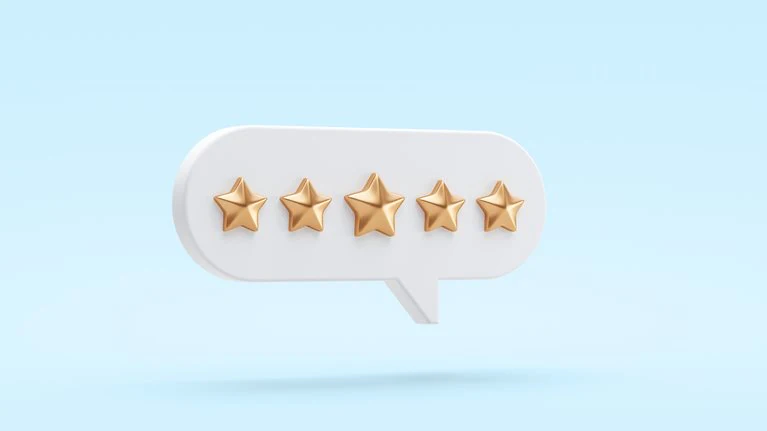
You might have an intuitive sense of what separates good CX, or customer experience, from bad. Imagine, say, you want a latte. When you visit the coffee shop, are staff members attentive? If you are a regular, do they greet you by your name? Was the store designed intuitively? Do they take your order promptly and hand you your cup with a smile? If you have a problem, is it promptly resolved, or is someone sent to help you? Do they proactively reach out to understand your overall experience?
All of those questions touch on elements of customer experience. The four components of CX are brand, product, price, and service.
Basically, CX refers to everything an organization does to deliver superior experiences, value, and growth for customers. And it’s crucial in an age when how a business delivers for its customers is just as important as—if not more important than—the products and services it provides. In a digital world, where customers review and share their experiences with a company in public forums, it has become vital for companies to connect with customers across their journeys at an emotional level. Not only is customer experience the right thing to do for customers but it also results in 3x returns to shareholders .
The COVID-19 pandemic was a test of how to connect with customers in times of crisis . And many did surprisingly well in providing good CX, for instance, by swiftly reorienting their efforts to meet customers’ primary needs with respect to safety, security, and everyday convenience. Take, for example, e-commerce companies and food delivery services that developed methods of contactless delivery to keep customers and drivers safe as the virus spread.
This article offers a brief overview of customer experience-related topics and answers questions such as:

What are customer journeys?
How to measure customer experience, what is the consumer decision journey, what is customer care, how to improve customer experience.
A customer journey describes the customer’s end-to-end experience, as opposed to their satisfaction at various individual transactions or touchpoints. These can include many things that occur before, during, or after the customer experiences a given product or service. Examples of customer journeys include bringing a new customer on board, resolving a technical issue, or upgrading a product.
Consider onboarding a new customer. At one company , this process took about three months and on average entailed nine phone calls, a technician visit, and interactions via both the web and mail. While there was a 90 percent chance, at any given touchpoint, of the interaction going well, average customer satisfaction fell nearly 40 percent over the course of the journey. More important than solving issues at the level of individual touchpoints was to reimagine the approach to service operations around the most crucial CX journeys.
Attending to full customer journeys instead of touchpoints can drive stronger business outcomes. For instance, a McKinsey survey found that customer satisfaction with health insurance is 73 percent more likely when the entire journey works well than when only touchpoints do. Looking to the hospitality industry, customers of hotels that get the entire customer journey right may be 61 percent more willing to recommend those hotels than customers of hotels that just focus on touchpoints.
If your company is looking to reinvigorate its customer experience, three efforts can help you move from touchpoints to journeys :
- Observe. Put yourself in your customers’ shoes: What do they see? This can help organize and mobilize employees around customer needs. In addition to identifying and understanding the customer’s journey, you’ll need to quantify what matters to customers and define a clear aspiration and common purpose.
- Shape. When you design customer experiences, interactions must be reshaped into different sequences. Even if your effort starts small, it can swiftly become much larger and entail the digitization of processes, the reorientation of company culture, and nimble refinements in the field.
- Perform. Making the transition to prioritize journeys can be a journey in itself that takes years and requires deep engagement from everyone in the company, from corporate leaders right down to the front line.
Learn more about our Growth, Marketing & Sales and Operations practices.
You might have a hard time imagining how you measure something as ephemeral as the magic your company creates for customers. But it can be done. Best practice calls for three guiding principles to help optimize customer-experience measurement :
- Measure the customer experience at the journey level, rather than at the level of touchpoints or overall satisfaction.
- Invest in hardwired technology that captures feedback on a daily basis from multiple channels, integrating survey results and other data into comprehensive dashboards.
- Cultivate a mindset of continuous improvement at all levels.
Depending on the level of CX adoption within an organization, consider the power of predicting CX , which can help you stay ahead of customer churn and dissatisfaction. Why? Survey-based systems alone don’t necessarily meet the needs of today’s companies; they’re limited, reactive, ambiguous, and unfocused. Predictive customer insight may unlock more powerful insights to improve customer experiences.
The consumer decision journey (CDJ) is a reconceptualization of the traditional marketing funnel. In this approach, the way customers make decisions is framed as a circular process involving four phases where customers can be gained or lost:
- initial consideration
- active evaluation, or the process of researching potential purchases
- closure, when consumers buy brands
- postpurchase, when consumers experience those brands
And conceptions of the consumer decision journey continue to evolve , especially in light of the new technologies and capabilities available to consumers. Today, it is important for brands not only to react to customers but also to actively shape their decision journeys. This may mean compressing or even eliminating the consideration and evaluation phases to drive competitive advantage . To foster an accelerated customer loyalty journey , four distinct but interconnected capabilities are crucial:
- Automation can be used to streamline the customer journey (for example, being able to snap a photo of a check and deposit it via your bank’s app rather than physically visiting a bank branch).
- Proactive personalization uses a customer’s information to instantly customize CX.
- Contextual interaction uses knowledge about where a customer is in a journey to deliver them to the next set of interactions.
- Journey innovation finds new sources of value, such as new services, for both the customer and the brand. This involves companies mining their data and insights about customers to figure out what other services they might appreciate. The best companies also design customer decision journeys that allow open-ended testing and frequent prototyping of new services or features.
Learn more about our Growth, Marketing & Sales practice.

Introducing McKinsey Explainers : Direct answers to complex questions
Customer care generally happens within contact-center operations. These are sometimes referred to as call centers, and people working at these organizations support customers throughout their journeys with a company’s products or services—no matter where customers need help (in-store, online, via mobile apps, etcetera). This is as all part of providing an omnichannel customer experience. Contact centers play an important role in customer care, and a forward-looking vision for these centers could entail hyperpersonalization to meet customers’ expectations in a way that’s both strategic and experience oriented.
How has COVID-19 changed customer experience?
COVID-19 changed customer experience in several ways. Many companies needed to shift the ways they worked with customers, for example, by providing alternative digital experiences when it was not safe for physical stores to be open. More broadly, how your company interacted with customers throughout the pandemic may have triggered an immediate and lingering effect on customers’ sense of trust and loyalty. In times of crisis, meeting customer needs with empathy, care, concern, and connection is important. It can help frame short-term responses, build longer-term resilience, and prepare for success after a crisis passes by keeping a pulse on how preferences are changing in real time. And it’s worth noting that more than three-quarters of consumers changed their buying habits during the pandemic—and in addition to value and convenience, purpose also drives shopping decisions.
What does digital customer experience mean?
Digital customer experience refers to elements of the experience that happen online or with the support of digital and analytics. This can facilitate interactions that are holistic, predictive, prioritized, and focused on value.
Consider the example of a leading airline that built a machine-learning system to track and prioritize customers who might choose a different carrier because they experienced multiple flight delays or other issues. The system, built in three months, drove an 800 percent increase in customer satisfaction and also reduced churn for priority customers by 60 percent.
When it comes to digital customer experience, companies are increasingly aiming to transition to predictive insights that could represent the future of CX . Some CX leaders are pushing on predictive CX platforms, which consist of three key elements:
- a customer-level data lake, with customer, financial, and operational data to develop a rigorous understanding of customer experiences
- predictive customer scores using analytics that track what’s influencing customer satisfaction and business performance
- an action and insight engine that’s shared with a broad set of employees, via tools such as customer-relationship-management platforms, through an API layer
These platforms can play a powerful role in linking CX to value and building clear business cases to improve CX. Of course, companies must stay attuned to customers and the privacy imperative . And it will also be crucial to build security into the digital customer experience .
Learn more about our Growth, Marketing & Sales , Digital McKinsey , and Risk & Resilience practices.
What about customer experience and loyalty?
If you offer a good CX, chances are your customers will be loyal to you or your brand. But that doesn’t happen without real effort. “Consumers are changing, and consumer trends are driving this,” says former McKinsey partner Jess Huang on the new generation of customer loyalty programs . “With the move to digital over the last ten years, consumers are spending more and more time on their phones and various digital channels. This makes it much easier to access the consumer, but there is also a lot more noise. Brands are trying to figure out the right way to break through that noise and develop a relationship with the consumer.”
Loyalty programs are vital to doing so, but two-thirds of them fail to deliver. Focusing on eight elements can help your loyalty programs perform better:
- Don’t be afraid to offer customers incentives to redeem their loyalty points.
- Consider the customer segments where there’s “breakage” (people whose points expire), and think about potential opportunities for improvement.
- Enlist strategic partners to enhance offers and rewards.
- Offer points-plus-cash options.
- Measure success based on engagement, not just accruals.
- Segment customers into groups you can handle.
- Personalize test-and-learn across customer segments.
- Create a standard P&L to accurately measure the incremental impact of loyalty programs.
Is customer experience the same in B2B and B2C contexts?
Much of CX in B2B isn’t the same as in B2C. Here’s why :
- relationships often go deeper in B2B
- longer, more complex B2B journeys involve more individuals
- customization is more widespread in B2B than B2C
- the stakes are usually higher in B2B deals, as individual B2B customer relationships are often worth millions of dollars
Nevertheless, more B2B customers say they would like a better customer experience—one that is more like those of B2C customers. And in complex B2B sectors like industrial services—think aftermarket service contracts for jet engines, industrial robots, or utility-transmission equipment— better customer experience is increasingly critical for growth . In a survey of 1,000 B2B decision makers, lack of speed in interactions with their suppliers emerged as the number-one “pain point” and was mentioned twice as often as price.
Keeping a finger on the B2B pulse can help you understand and respond to emerging B2B customer needs , especially in light of the shift to omnichannel . Adjusting your approach for the mix of traditional, remote, and self-service sales channels is increasingly important—and 94 percent of B2B decision makers say new omnichannel sales model are as effective or more effective than prepandemic sales models. For even more, here’s a case study of how a B2B organization in China became more customer-centric.
How do different industries approach customer experience?
Because customer needs and expectations vary by context, different industries may approach CX in different ways. Here are just a few examples of how industries grapple with the issues:
- Automotive. Car companies are putting customer experience in the driver’s seat —whereas manufacturers once competed on their engineering capabilities, CX is now a true differentiator, and customer-centric innovation is crucial.
- Travel. The COVID-19 pandemic turned travel upside down, and travelers’ customer experience is emerging as a challenge during the recovery. Doing better could entail aiming higher on experience, understanding customers more deeply, and moving faster operationally.
- Retail. Retail and consumer CX likely needs to account for a variety of omnichannel operational considerations . Retailers also need to stay attuned to the rise of the inclusive consumer and make adjustments to serve their needs. And preparing for the future of shopping , where technology is everywhere, will also be important.
- Banking. CX transformation in banking can pay off by delighting customers and, in turn, delivering revenue and cost improvements for banks themselves. And in regions like Asia–Pacific, digital innovation in banking offers some insight on whether or how banks should rethink customer engagement . Keeping up with customer trends can also unearth new opportunities, for instance, as we’ve seen with buy now, pay later financing models. Fintech players may be on the vanguard when it comes to taking the friction out of financial services for customers.
- Insurance. Many insurers have invested heavily in digitizing customer journeys and processes to improve the experience. A user-first, omnichannel approach could rely on the availability of online purchasing capabilities, the ease of navigating online journeys, and seamless integration of sales support and advice. The rise of insurtechs has also helped the industry address some customer pain points.
- Healthcare. In coming months and years, “Care at Home” could reshape the way health systems deliver patient-centered care . The rise of telehealth could also affect CX in healthcare . Focusing on whole-person care could improve outcomes for patients with behavioral-health conditions. Monitoring healthcare consumer insights will remain important, and providing compassionate, personalized care can benefit both patients and healthcare organizations.
- Utilities. Transforming CX in utilities helps customers and can allow utilities themselves to drive out costs. Self-service and digital channels are crucial in this context.
- Government. Prioritizing and improving customer experience in government can offer big benefits for customers. It can also give employees greater purpose—and improve agencies’ reputations.
- Service businesses. Are customers of industrial-services businesses happy? The bar is rising, but for industrial OEM customer experience , organizations will need to better understand what customers want and need.
What are the differences between customer experience and employee experience?
While the design thinking that transformed customer experience is now also transforming employee experience (EX) , there are some differences between the two:
- A customer journey is often a lot quicker than an employee journey. It might take months or even up to a year for employers to hire a new employee. That’s a lot longer than most customer journeys.
- Many employers’ interactions with their employees continue to be top-down instead of being a constant, two-way iterative process—as successful customer journeys have become. For instance, while many companies are exploring hybrid work options, others are considering a full return to the office, even though many of their employees would prefer to continue working from home.
But happy employees are crucial to providing good CX—meaning that CX and EX are related. In that regard, improving employee experience in service of building a customer-centric culture can have a powerful effect. Just consider how much mindsets matter here: some employees, for instance, might think, “I’m not involved in asking for customer feedback.” But in a customer-centric culture, reframing that so employees feel empowered to create opportunities to ask for customer feedback can pay dividends.
Learn more about our Growth, Marketing & Sales , People & Organizational Performance , and Operations practices.
Three building blocks are essential in transforming or improving customer experience throughout your organization:
- Build aspiration and purpose. A clearly defined CX aspiration should deliver on your company’s purpose and brand promise. Have you developed a customer-centric vision and aspiration, linked it to value, and translated it into a concrete road map?
- Transform the business. Here’s where you discover customer needs, design solutions, and deliver impact, whether that’s via customer journeys, products, services, or business models.
- Enable the transformation. After introducing a new experience for customers, your company needs to consider how to sustain its efforts. This involves transforming employee mindsets; building capabilities; stepping up on technology, data, and analytics; establishing cross-functional governance and an agile operating model; and deploying systems to measure and manage performance.
Improving customer experience can make a big difference. In over a decade of helping more than 900 companies design and implement enterprise-wide CX programs, approaches that rest on these building blocks have delivered 15 to 20 percent boosts in sales conversion rates, 20 to 50 percent reductions in service costs, and 10 to 20 percent improvement in customer satisfaction.
It’s also important to stay attuned to customer experience pitfalls so your organization can avoid them. These include failing to link CX to value, taking a narrow view of CX, and applying limited creativity; don’t miss the examples of how other organizations have sidestepped these issues in transforming CX.
For more in-depth exploration of these topics, see McKinsey’s Customer Experience collection. Learn more about the Marketing & Sales , Operations , and McKinsey Digital Practices, and check out customer experience–related job opportunities if you’re interested in working at McKinsey.
Articles referenced include:
- “ Six customer experience pitfalls to avoid ,” March 17, 2022, Itai Miller, Kevin Neher , Rens van den Broek, and Tom Wintering
- “ Next in loyalty: Eight levers to turn customers into fans ,” October 12, 2021, José Carluccio, Oren Eizenman, and Phyllis Rothschild
- “ This time it’s personal: Shaping the ‘new possible’ through employee experience ,” September 30, 2021, Jonathan Emmett, Asmus Komm , Stefan Moritz , and Friederike Schultz
- “ How to boost growth in industrial services: Better customer experience ,” July 28, 2021, Hugues Lavandier , Senthil Muthiah, Kevin Neher , Stephanie Trottier, and Hyo Yeon
- “ Prediction: The future of CX ,” February 24, 2021, Rachel Diebner, David Malfara, Kevin Neher , Mike Thompson, and Maxence Vancauwenberghe
- “ The three building blocks of successful customer-experience transformations ,” October 27, 2020, Victoria Bough , Ralph Breuer , Nicolas Maechler , and Kelly Ungerman
- “ The human touch at the center of customer-experience excellence ,” October 8, 2020, Alex Camp, Harald Fanderl , Nimish Jain , Bob Sternfels , and Ryter von Difloe
- “ The CEO guide to customer experience ,” McKinsey Quarterly , August 17, 2016, includes interviews with Alfonso Pulido , Ron Ritter, and Ewan Duncan
- “ The consumer decision journey ,” McKinsey Quarterly , June 1, 2009, David Court, Dave Elzinga, Susan Mulder, and Ole Jørgen Vetvik
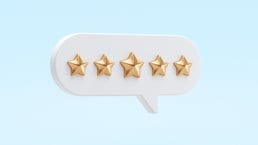
Want to know more about CX?
Related articles.
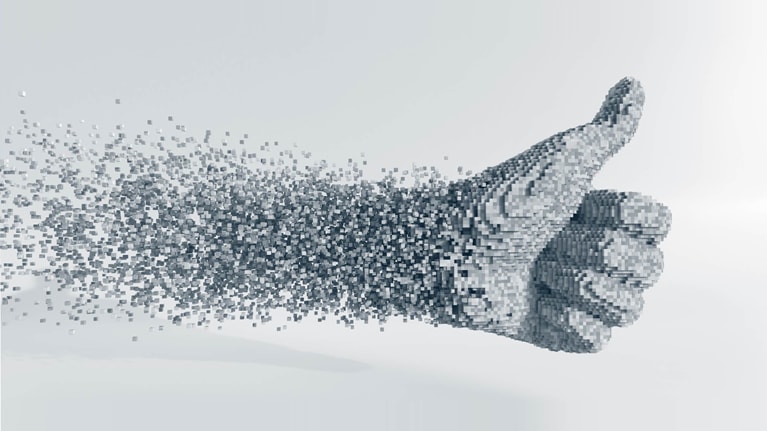
Six customer experience pitfalls to avoid
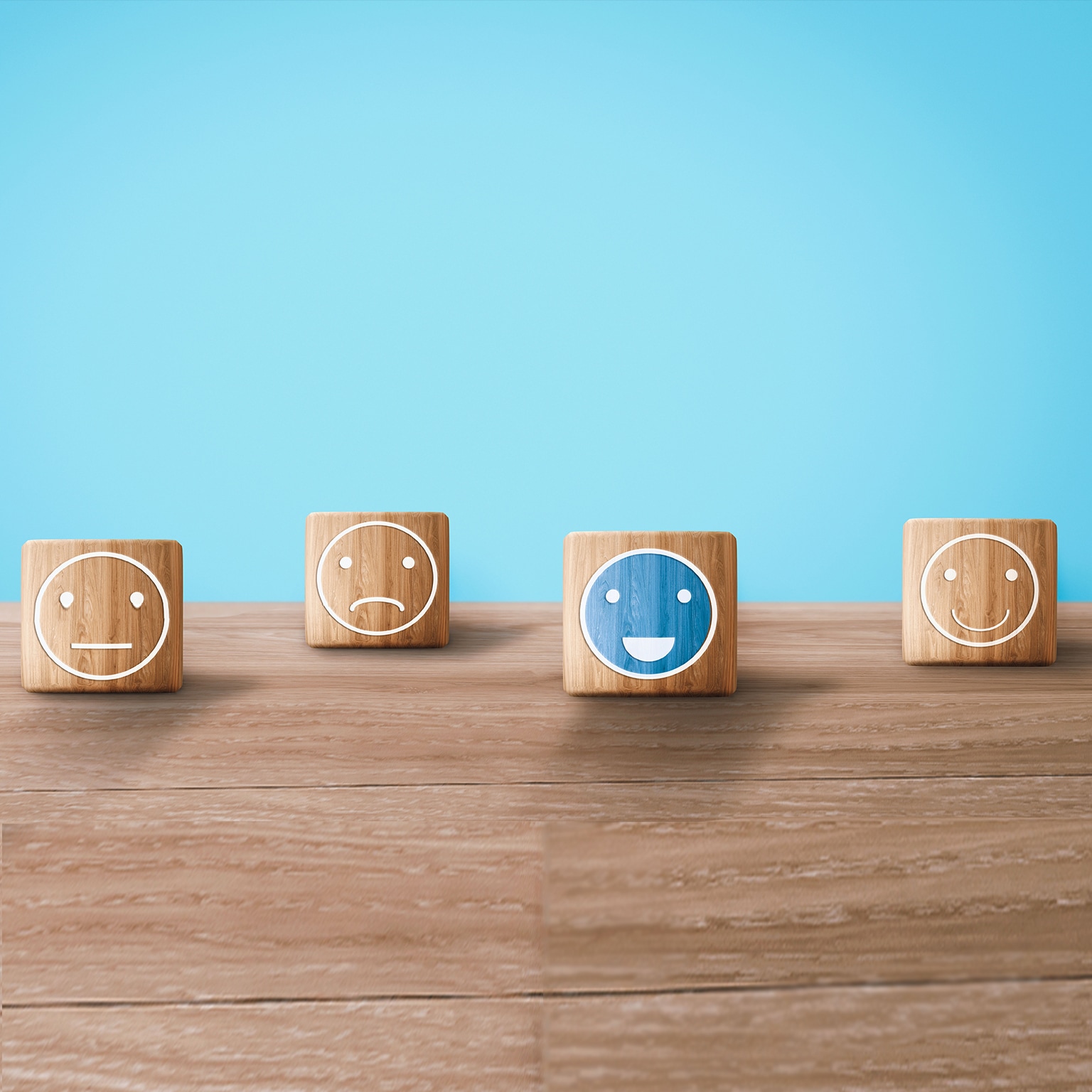
Next in loyalty: Eight levers to turn customers into fans

Prediction: The future of CX
Learn how top CX leaders are scaling personalized customer service at their companies. Register for our online event.
Webinar: Learn how to turbocharge Zendesk & Salesforce with cobrowsing tech - Save Your Seat

Customer Journey vs Customer Experience (CX): Definitions & Differences
- Understanding customer journey and customer experience is essential for business success, as 73% of consumers prioritize experience in their purchasing decisions.
- Customer journey maps touchpoints, while customer experience delves into emotional and psychological experiences.
- Commonalities between them include customer focus, a holistic approach, continuous improvement, emotional connection, value creation, and data-driven decision-making.
- Differences include the focus (functional vs. emotional), scope (linear vs. holistic), measurement (metrics vs. qualitative/quantitative), and outcome (improving conversions vs. enhancing customer satisfaction and loyalty).
- Customer journey examples include the steps customers take in purchasing or engaging with a brand, while customer experience examples illustrate the emotional aspects of those interactions.
- Both concepts are crucial for shaping customer relationships, and businesses should continuously monitor and enhance them to drive growth.

Join our community
The latest and greatest from the world of CX and support. No nonsense. No spam. Just great content.
In the ever-evolving business landscape, understanding the factors that influence consumer purchasing decisions is crucial to success. This article will focus on two such factors - Customer Journey and Customer Experience (CX). These terms, while sometimes used interchangeably, have distinct meanings and implications for businesses. Our aim is to unpack these concepts, highlighting their differences and how they can be leveraged for effective customer engagement strategies.
Why is this important? Consider this: a recent survey revealed that 73% of consumers consider experience as an important factor in their purchasing decisions, ranking just behind price and product quality. This statistic underscores the critical role that both Customer Journey and CX play in shaping consumer behavior and driving business success. Join us as we delve deeper into these intriguing concepts, offering insights that could revolutionize your approach to customer engagement.
Before we begin, a little aside: We won't be covering customer experience and its benefits, customer journeys, or customer journey maps in this article, but you can find more information about these topics by reading these posts:
- What Is Customer Experience?
- Customer Journey Mapping
Customer journey vs customer experience: the similarities
While they each represent different aspects of the customer's interaction with a brand, they share several commonalities. The customer journey maps the various touchpoints a customer encounters with a company or brand, while customer experience delves into the emotional and psychological experiences during these interactions. Despite their unique focuses, there is a significant overlap between these two concepts, underscoring their shared objective of enhancing the customer's relationship with a brand.
- Customer Focus : Both the customer journey and customer experience revolve around the customer. They emphasize understanding the customer's needs, desires, and behaviors to enhance their interaction with a brand or product.
- Holistic Approach : Both concepts take into account the entire spectrum of a customer's interaction with a company, from the initial point of contact through the process of engagement to long-term relationships. They don't focus on isolated incidents but rather the complete experience. With 1 in 3 customers stating that they will leave a brand they love after just one bad experience, the importance of a comprehensive approach to customer engagement cannot be overstated.
- Continuous Improvement : Your customer journey and customer experience require continuous monitoring and improvement. Companies need to consistently evaluate how customers are interacting with their brand and make necessary changes to improve these interactions.
- Emotional Connection : Both concepts recognize the importance of emotions in shaping customer behavior. They understand that a positive emotional connection can lead to higher customer loyalty and satisfaction.
- Value Creation : Customer journey and customer experience both aim to create value for the customer. Whether it's by solving a problem, providing entertainment, or fulfilling a need, the ultimate goal is to provide something of value that enhances the customer's life.
- Data-Driven : Both concepts rely heavily on data to understand customer behavior and preferences. This data is then used to make informed decisions to enhance the customer's experience or journey.
Customer journey vs customer experience: the differences
Now that we've covered the key similarities between customer journey and customer experience let's delve into the differences that set these two concepts apart.
- Focus: Your customer journey refers to the series of steps a customer goes through when interacting with your company, from initial awareness through to purchase and beyond. It focuses on the functional aspects of this process. On the other hand, customer experience is about how a customer feels during these interactions. It delves into the emotional and psychological experiences that can shape a customer's perception of a brand.
- Scope: A customer journey is typically linear, mapping out a specific path that customers take when engaging with a brand. It might include touchpoints like seeing an ad, visiting a website, or making a purchase. In contrast, customer experience is more holistic and takes into account every interaction a customer has with a brand across all channels and touchpoints over time.
- Measurement: Customer journey is often evaluated using metrics like conversion rates or click-through rates at different stages of the journey. In contrast, customer experience is usually measured through qualitative feedback and quantitative metrics such as customer satisfaction score or Net Promoter Score ( NPS )
- Outcome: The goal of analyzing your customer journey is often to identify bottlenecks or pain points that can be addressed to improve conversions or sales. The aim of understanding customer experience, on the other hand, is to enhance overall customer satisfaction and loyalty, which can lead to long-term business growth.
Customer journey vs customer experience: examples
So, what does all of this mean in practice? Let's take a look at some examples illustrating the difference between customer experience and customer journey.
Customer Journey Examples:
- A customer sees an ad for a product on Instagram, clicks on it, visits the company's website, reads reviews, adds the product to their cart, and completes the purchase. This entire process represents the customer journey.
- A potential client hears about a consulting firm from a colleague, visits the firm's website, downloads a whitepaper, schedules a consultation, and eventually signs a contract. Each of these steps is part of the customer's journey with the firm.
Customer Experience Examples:
- A customer walks into a store and is greeted by friendly staff, finds the store layout easy to navigate, gets helpful advice from a salesperson, and leaves feeling satisfied with their purchase. This positive experience can lead to repeat visits and word-of-mouth referrals.
- A user downloads an app, finds the interface intuitive, enjoys its features, encounters no bugs or crashes, and receives prompt customer support when needed. This overall user experience can influence the user's ongoing engagement with the app and their willingness to recommend it to others.
While the customer journey focuses on the path customers take, the customer experience centers on their feelings at each step of that journey. Both play crucial roles in shaping the customer's relationship with a brand.
Your company’s customer journey and customer experience are two sides of the same coin, with each concept complementing the other. By understanding the key differences between these concepts, companies can take a more comprehensive approach to improving their interactions with customers and creating long-term value for their brands. By continuously monitoring and enhancing both the customer journey and customer experience, businesses can build strong relationships with their customers and drive business growth.
Sources used:
- Future of customer experience
- Customer experience statistics
Sources Last Checked: October 27th, 2023
.png)
Shifa Rahaman
Content Marketing Manager

Guide customers to faster resolutions
- Cobrowse w/ screen control
- Highlight on screen
- Integrate w/ Zendesk & more
Related articles
Customer success vs. customer experience.
What is the difference between customer success and customer experience in SaaS? Read on to find out.
How To Bridge The Customer Expectation Gap
Whether actively expressed or subconsciously expected, it has become clear that customer expectation levels are higher than ever.
10 Of The Best Customer Experience Software For 2024
We've compiled a list of the top 10 customer experience software in 2024 to help you provide the best support and CX.
Supercharge customer support
Discover customer and product issues with instant replays, in-app cobrowsing, and console logs.

Eliminate guesswork & resolve customer issues at ⚡️ speed
Leave your email below and a member of our team will personally get in touch to show you how Fullview can help you solve support tickets in half the time.
Make every CX decision a data-driven one.
Fullview's customer support benchmarks report covers CSAT averages, survey response rates, FCR by call type, CES 2.0, and more!
.webp)
Business growth
Business tips
What is CX? Customer experience management 101
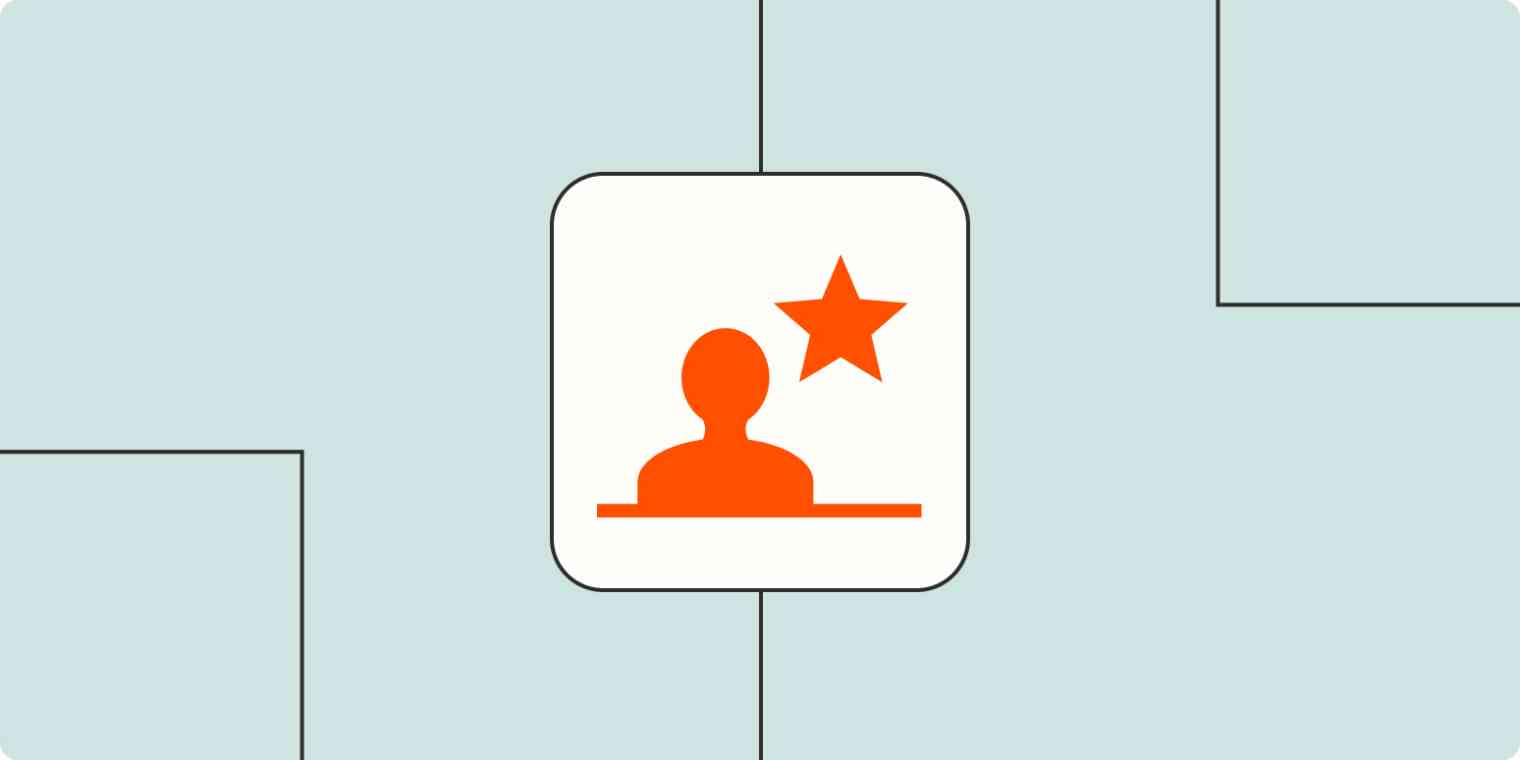
If you don't know what customer experience management is, that's ok—I've been placed on enough unreasonably long holds to know that lots of major companies don't know very much about their CX, either.
Every interaction a person has with a brand is part of the larger customer experience, or CX. It's the CX manager's job to strategically plan these interactions to not only give the customer what they need in the moment, but also to make a positive enough impression to move them in the direction of making or renewing a purchase.
Table of contents:
What is customer experience (CX)?
Why is cx important, customer experience vs. customer service, the 5 stages of the cx lifecycle, examples of good cx, how to improve customer experience, cx metrics and kpis, how automation enhances the cx process.
Think of CX as a long, winding conversation between your brand and your customers. It's every interaction they have with you, from that first curious click to...well, it never really ends, does it? The conversation goes on as long as they're a customer—and sometimes even after that.
But it's not just about the sale—it's about making the whole boogie worthwhile. That means whatever advertising a customer sees, the interactions they have with your team, how your website or app functions, and even the emails you send all have an impact on their experience.
What is customer experience management?
Every dip and twirl a customer has with a company , from the first time they learn about the brand to the day they become a full-fledged brand loyalist , counts as part of the larger CX journey.
Within that journey, there are a number of sub-experiences with names and abbreviations that can feel confusingly similar to CX. Here's a quick rundown to help you keep these different concepts separate as you venture further into the CX management process:
Customer service is one example of a customer experience that takes place in the later phases of the customer journey—but not all CX interactions have to do with customer service.
User experience (UX) is another subset of the CX lifecycle that describes the customer's experience of using the product or service itself. Typically, UX takes place during the retention and loyalty-building phases of the CX journey.
Customer relationship management (CRM) deals primarily with the collection and organization of information about customers . Often, CX decisions are made based on an understanding of the customer that's drawn from the data collected as part of a company's CRM . Although the differences between CX and CRM are nuanced, they are two distinct processes.
Note that it's not just human-to-human interactions that count as part of the customer experience. A customer service call is an obvious example of a CX interaction, but non-human brand interactions—like reading an ad, scanning a website, or downloading an app—are just as much a part of CX as any human conversation.
For example: have you ever come across a new app feature that left you asking, "Why would they think I needed that?" Many brands (especially in tech) make the mistake of planning decisions around what the product can do, rather than what the customer needs the product to do. Their scientists are so preoccupied with whether or not they could that they don't stop to think if they should .
On the other side of the spectrum, have you ever had an app do something you needed before you even had a chance to realize you needed it? I'm looking at you, whoever made my phone start automatically importing verification codes from my texts—genius.
Both of these examples are parts of the customer experience, even though they don't include any direct human interactions.
If I haven't made it clear yet, CX matters—a lot. And it's not just about making your customers smile (though that's nice). It goes deeper, impacting your bottom line and your company's future.
Here's how:
Increases sales and revenue: When customers have great experiences, they come back for more. This isn't rocket science; people like to buy from places that make them feel good.
Aids brand reputation: News travels fast. If a customer has a fantastic experience, they're likely to tell their friends. Those friends tell their friends, and before you know it, your brand is the talk of the town.
Boosts customer lifetime value: When customers stick around longer and keep buying, their value increases over time. It's simple math.
Reduces customer support costs: If you're doing CX right, you've answered your customers' most pressing questions before they even have them. That means you spend less time and money solving problems.
Remember the classic documentary Monsters, Inc. ? Good CX means you're capturing customer happiness, not their screams of terror. It turns every interaction into a powerhouse of goodwill and trust, attracting more customers and boosting your bottom line rather than sending them running for the hills.
Let's clear up a common misconception: when talking about customer experience and customer service, you're really comparing an overarching strategy (CX) to one of its key elements (customer service).
Customer service is your "fixer." It's reactive. It deals with issues as they arise and does its best to put things right. In short, it's a crucial part of your interaction with your customers, but it's not the only interaction a customer has with your brand.
Customer experience, on the other hand, is the whole shebang. CX encompasses every single interaction a customer has with your brand—from the first ad they see to the service they get after making a purchase. It's proactive, ensuring every touchpoint is positive, even before issues occur.
So, while customer service is part of a customer's experience, it's just a cog in the grand machine that is CX.
We'd all like to believe that our experiences in life are unique, but when it comes to the CX lifecycle, we're all disappointingly unoriginal in how we move through the customer journey. Though different purchasing processes will feel different to us when we're the customer, all of our behaviors and interactions will still ultimately map to the same five-stage cycle—which, when you find yourself on the CX management side of things, makes life a lot easier.
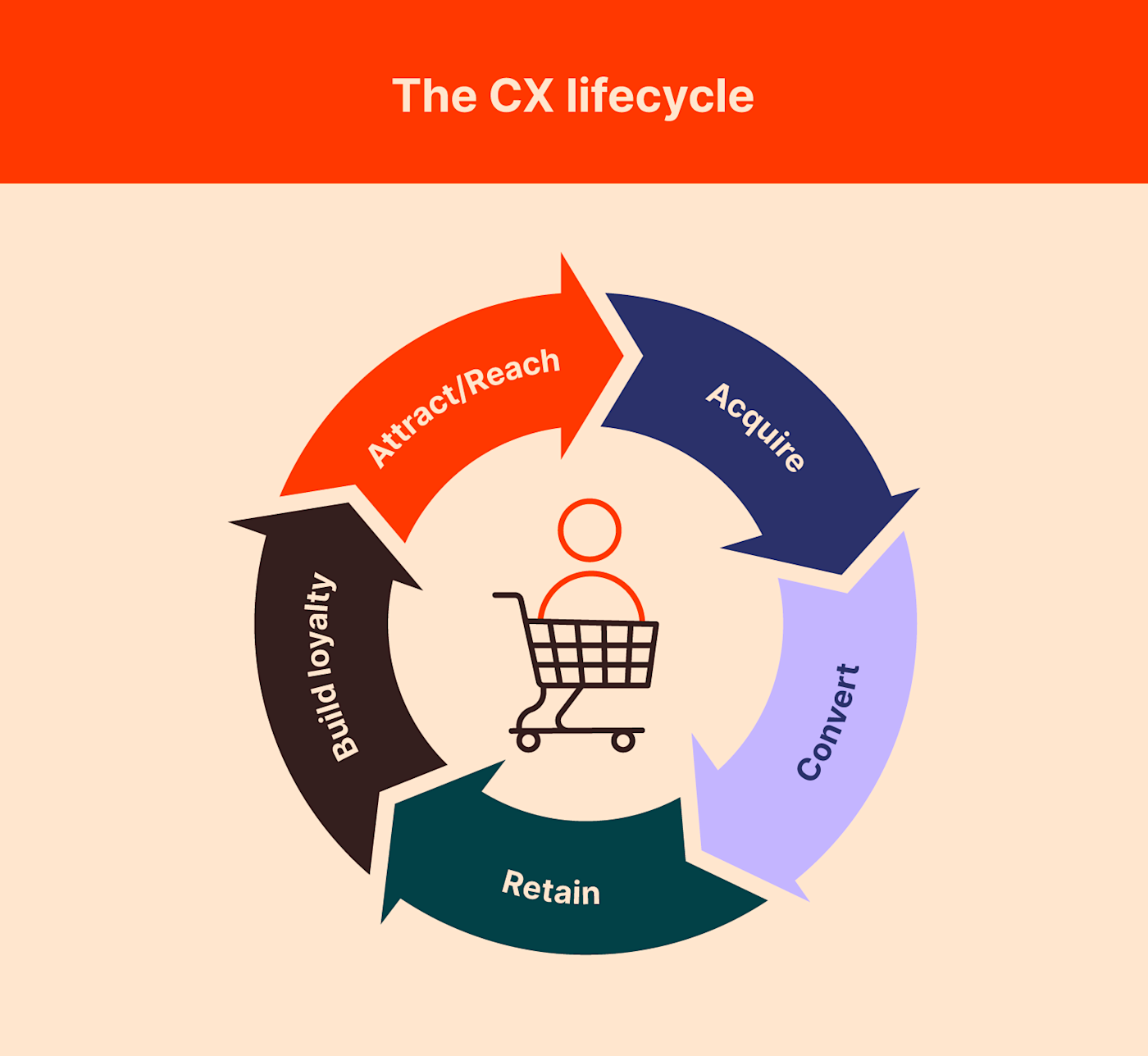
The five stages are named for the primary focus that a CX manager should have when interacting with customers in that phase.
Attract/reach: In the earliest stage of the CX journey, the brand's goal is simply to make prospective customers aware of their existence and the products and services they offer.
Acquire: Once people are aware of a product, the goal is to acquire their dedicated interest. The objective here shouldn't be to actually make a sale, but to create a desire to learn more about the product.
Convert: After a period of general interest, it's time to strike with the hard sell to convert prospects into actual customers by pushing them toward making a purchase.
Retain: Customer service and user experience come into play during the retention phase, during which the company's job is to deliver on the customer's expectations in order to keep them from switching to competitors and to encourage recurring purchases, longer subscriptions, and upgrades.
Build loyalty: Lastly, CX managers have the opportunity to convert repeat customers into brand advocates by generating true enthusiasm and loyalty for their product.
You know that feeling you get when you think about a brand, and only positive memories come to mind? That's the hallmark of good CX. It's the seamless blend of your needs being anticipated and met, often before you know you have them. Here are some examples of brands that do just that.
Spotify Wrapped
Remember when Spotify introduced its annual Wrapped feature? Even though you may have been slightly embarrassed that you listened to the same Taylor Swift song 758 times (in one month), it was still a deeply personal gesture. That's CX in action. It made users feel understood and appreciated, and it got people talking about the brand.
Disney Parks
There's a reason Disney is called "The Happiest Place on Earth." Disney Parks are renowned for their customer experience , and it's not hard to see why. The staff, or "cast members," are fully committed to making your visit magical. Every detail—from whatever addictive aromas they're pumping into the air to the enthusiasm of the characters—is designed to create a memorable and happy experience. This even extends to their app, which helps you plan your day, skip lines, and order food. The result? Guests who leave with happy memories and a strong desire to return.
BarkBox , a subscription service delivering uniquely curated treats, toys, and gifts for dogs, is an example of a brand taking CX to heart. Their designated "Happy Team" is a clear demonstration of this commitment. The Happy Team focuses exclusively on ensuring that each interaction with the company is positive, memorable, and effortless for the customer.
The basic steps to building a customer experience strategy are simple:
Understand your customer
Identify your customer's needs
Create a plan to satisfy those needs
Listen to your customer
Ensure alignment across all channels
Unfortunately, "understand your customer" is about as specific and helpful as telling someone to fold in the cheese . We need more info: how do we go about understanding the customer and their needs? How does one fold in the cheese?
1. Build a customer profile
A solid first step for most customer-facing processes—not just CX—is to profile your prospective customers. Marketers, product managers, and user experience designers all frequently begin their process with some type of ideal customer profile , or ICP.
An ICP gathers key demographic data and characteristics about your customer in one place, where it can be used to help teams better understand who their target customers are. An ICP for any team typically includes:
A basic background
Demographics (age, gender, income, job title, location, education, family, etc.)
Common challenges or pain points
Objectives or goals
For example, if you invented a real-life Rosey the Robot , your ideal customer profile might be George Jetson, a middle-class working father who doesn't have the time to keep up with his house chores while also working overtime to fund his wife's inconvenient wallet-snatching habit. This is the information you would use to create the basic structure of your ICP.
Beyond these basics, ICPs for different processes and different product types may include different pieces of information. For example, the CX team will want to add lifestyle information, like the length of George's commute and the fact that his car folds up into a briefcase. The user experience team, on the other hand, won't care very much about what George is up to outside of his direct interactions with Rosey.
2. Get in your customer's head with an empathy map
If an ICP is your customer's resume, an empathy map is their personal statement. The customer profile helps you understand who your customer is, but the empathy map helps you step into their shoes and dig into what they say, think, do, and feel.
The example empathy map below captures a potential to-do list app customer named Andrea, who struggles to keep up with all of her tasks in her personal and professional life.
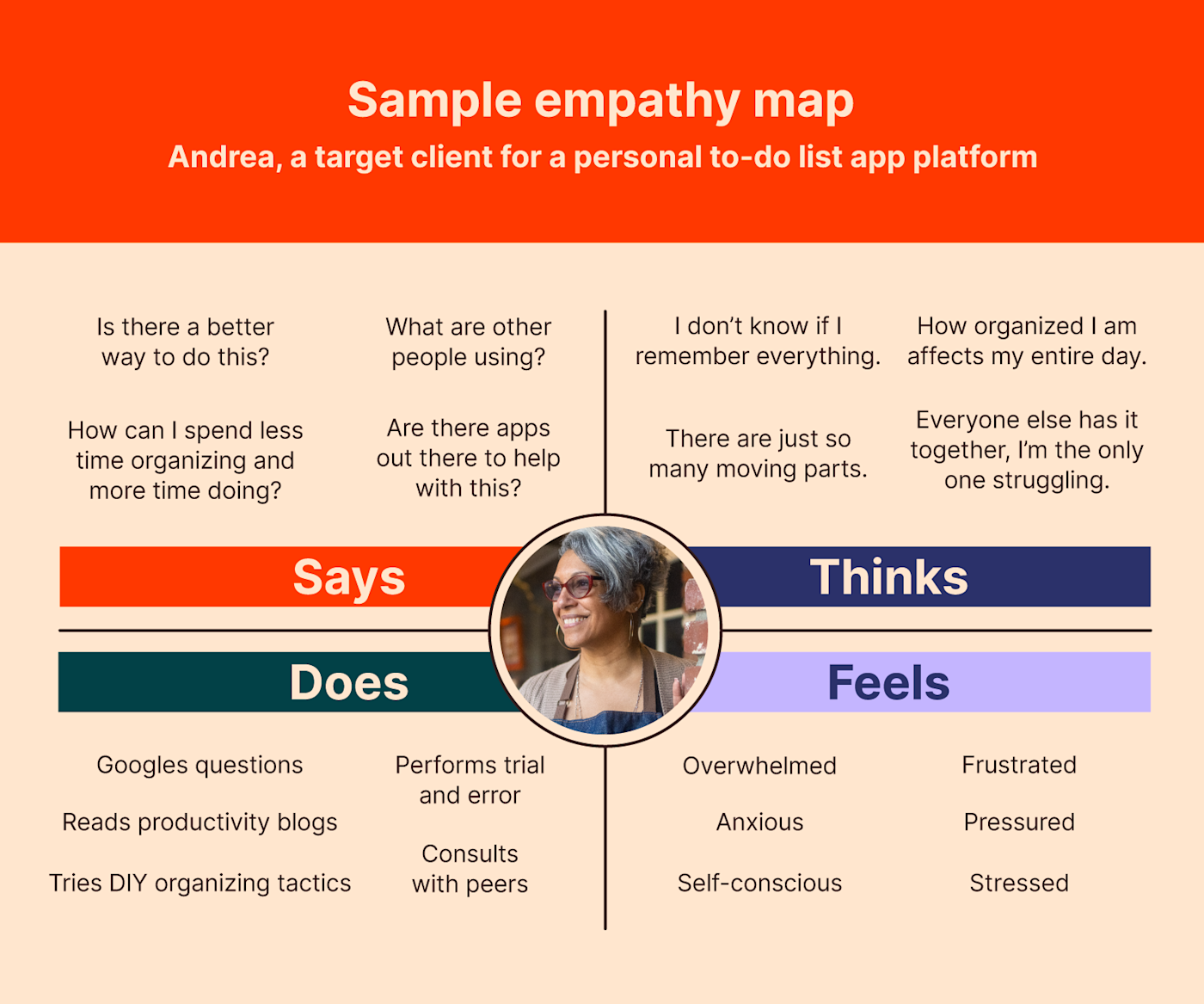
We can pretty safely assume that Andrea feels overwhelmed by the number of tasks she has to juggle and frustrated with her current management system. But as we fill in her empathy map, we start to tap into her experiences with a little more nuance—not only is Andrea overwhelmed, but she also thinks that no one else struggles in the same way she does. In highlighting this, we've uncovered an opportunity to connect with her more strongly with messaging that acknowledges her self-consciousness and reassures her that she's by no means alone in her struggle.
As a CX manager, creating an empathy map to be used by all customer-facing departments can also help you sync your team's messaging to provide a frictionless, unified customer experience through every stage of the customer's journey.
3. Create a customer journey map
A customer's journey is everything that happens between "Oh, that's kinda cool" and "Hey, you should try this." Every ad they see, every Instagram story, blog post, newsletter mail-out, website visit, and customer service call. And your customer journey map is a visual guide that shows all the stops and interactions along the way.
While an empathy map gives you insights into what might be going on in a customer's head at any given point in time, the customer journey map plots a specific trail of breadcrumbs a customer might follow through their interactions with your business.
Let's take Tesla, for example. Here's how their customer journey map might look:
Awareness: A potential customer sees an ad or an article online that sparks their interest in Tesla.
Consideration: That customer does some research, is impressed by Tesla's environmental record, and decides to take a test drive.
Conversion: After a great test drive, the customer hops online, and within a few clicks, they're able to order a brand-new Tesla.
Retention: Proud of their new car, the customer then joins an online community with other owners to stay on top of new developments and software updates.
Brand loyalty: Happy with their car, its growing list of features, and the community, that customer not only pre-orders a new model but also shares their excitement with friends and family.
There are a number of different formats and approaches to creating a customer journey map , so once you're ready to create one, take some time to dig into the specifics.
4. Implement customer feedback
There's no one better suited to tell you how you're doing than your customers. Their feedback, whether it's positive or negative, is a gold mine of information that can help you shape your CX strategy.
Open lines of communication with your customers and provide multiple channels where they can voice their opinions and experiences. But just listening isn't enough. You gotta do something about it.
By adjusting your services or products or even just changing how you post on social media, you're telling your customers that you value what they have to say. Not only will this help you build better relationships with them, but it'll also make your brand stand out as a business that actually cares.
5. Ensure a unified experience
It doesn't matter if your customers are scrolling through social media, reading a blog post, stepping into your store, or dialing your number. They need to get the same vibe, the same message, the same level of service—always.
Every interaction a customer has with your brand should be like catching up with an old friend—familiar and comfortable.
This consistent, unified experience across all channels is what we call an omnichannel approach . The goal is to make the customer journey easy (like Sunday morning). It reduces confusion, builds trust, and creates a genuine connection between your brand and your customers.
Much to any automation enthusiast's chagrin, a CX management strategy isn't something you can "set and forget." Customer experience managers need to select and measure key performance indicators that quantify how successful different features, products, and experiences have been.
If you're lucky enough to have customers who are so clearly satisfied that you can see it without tracking metrics, that's great—it means that you're doing something so well that it's left an obvious positive impression on your customers. I hate to be the one to tell you this, though: you still need to collect and track metrics. When you're introducing several different updates, new customer support features, existing customer discounts, and other CX-improving factors, there's no way to determine which of these things has contributed to your success (or to reliably build on it) unless you're quantifying your progress with key performance indicators (KPIs).
There are four main KPIs that managers use to measure CX :
Customer satisfaction (CSAT)
Net promoter score (nps), customer lifetime value (clv).
You've seen customer satisfaction (CSAT) surveys a million times—at the end of product purchases, subscription cancellations, and even sometimes at the end of a restaurant meal. After you've finished paying and you're just about ready to move on to your next task, you get the question: how satisfied were you with your experience today?
By asking customers to boil their overall satisfaction down to a single number, you make it possible to understand what your average customer satisfaction is, how many customers fall into each satisfaction range, and more. CSAT surveys frequently address the overall customer experience, but you can also send them out to get customer perspectives on individual features and interactions to see what's working and what's not.
If you also collect demographic data for your survey respondents, you can take this one step further to determine that, say, your average customer satisfaction rating is a 6, but that women ages 35-44 consistently give it a 10. You can hone future marketing, customer service, and sales decisions using feedback from real customers.
CSAT data is also used to calculate another commonly used metric called the Net Promoter Score , or NPS. After you've collected your CSAT responses, label customers with 1-6 satisfaction "detractors," those with 9-10 satisfaction "promoters," and those in between "passives" or "neutrals." Determine what percentage of your total survey population is made up of each group, then subtract the percentage of detractors from the percentage of promoters—the resulting figure is your Net Promoter Score.

If you run a coffee shop, the intern who comes in every morning to place their six-person team's daily order is going to be a lot more valuable to you than customers who drop in to order their own coffee every once in a while. The intern has a higher customer lifetime value (CLV, or customer LTV) than an average customer because their orders are more expensive and they place them more frequently.
Customer lifetime value measures the total worth of a customer's business over the course of their entire relationship with a company. Calculate CLV by multiplying the average cost of the customer's regular order or recurring subscription by the number of purchases they make in a year. Multiply this number by the number of years you can reasonably expect the customer to continue to patronize your business to find the total lifetime value of that customer.
As an equation, that will look like this:
(C x O) x Y = CLV
C = cost of the order
O = number of orders in a year
Y = number of years you expect the person to remain a customer
CLV is intended to be a rough estimate, not a very specific or accurate number, so don't get too bogged down in the mathematical details.
The last CX metric on our list is also often the most stressful: customer churn rate, or the rate at which you're losing customers.
To calculate churn, divide the number of customers lost in a particular time period (e.g., a fiscal quarter) by the number of customers you had at the beginning of that same time period. Multiply your result by 100 to get a percentage value—this is your churn rate for that quarter.
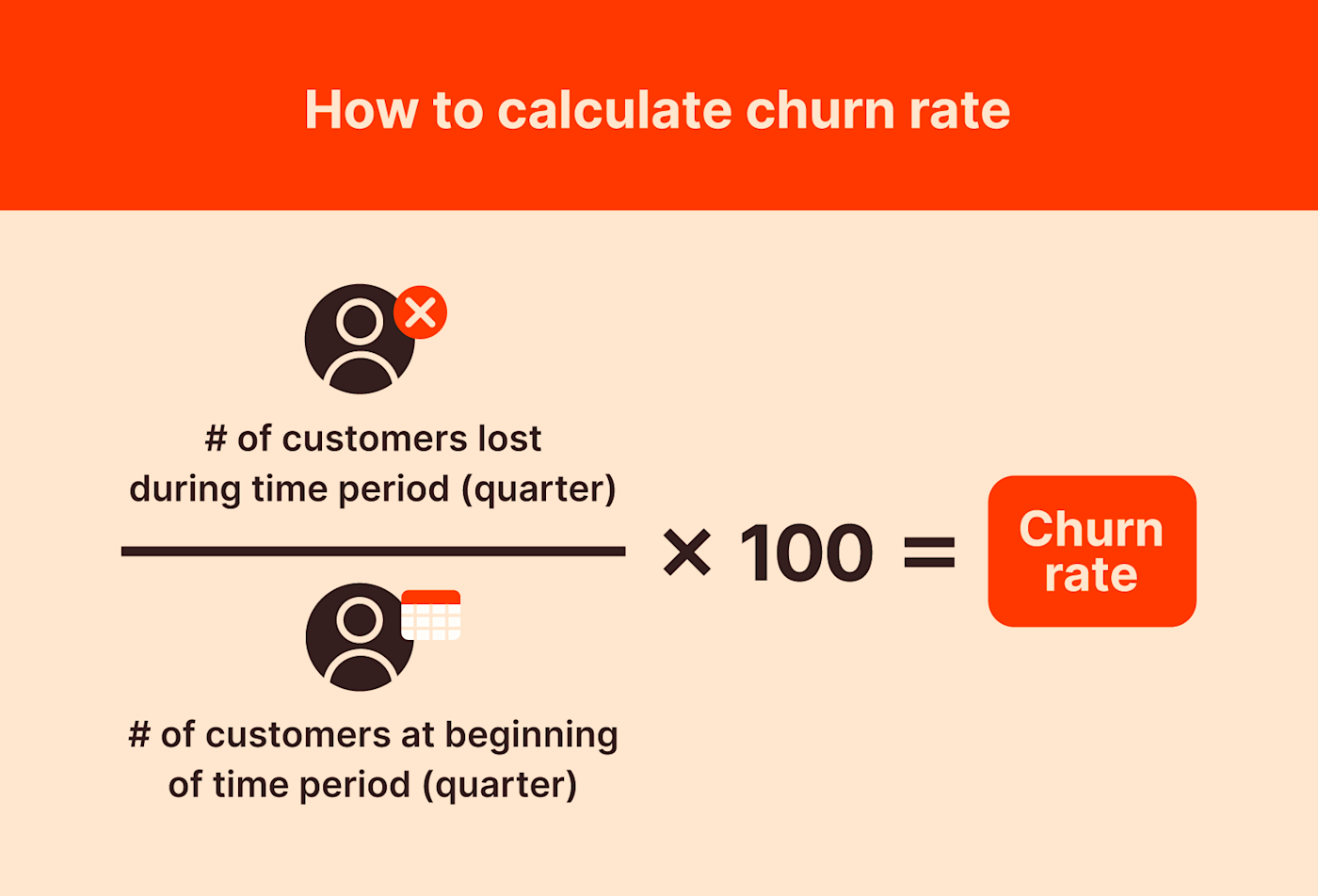
Churn rate isn't as applicable for regular consumer purchases, so the coffee shop owner in our CLV example likely wouldn't use it to track their CX strategy. Typically, churn rate is more important for companies that work with clients long-term, since the loss of a long-term contract will have a larger impact than the loss of an individual customer.
Automation doesn't enhance the CX process so much as a lack of automation makes the CX process virtually impossible.
Think about how little else you would be able to accomplish if you had to collect all of the data necessary to calculate the metrics above, personally field customer phone calls and emails, and run the company's support chat. You'd burn out completely before you even got your CX strategy off the ground.
Automation makes it possible to perform customer experience functions like:
Capturing and nurturing potential leads
Tracking customer interactions
Collecting customer feedback
Handling simple customer service tasks
Organizing customer feedback records in a central location
The more you automate, the more time you have to focus on your customers. The more time and attention you give your customers, the happier they'll be.
But you don't have to take my word for it —check out the many ways brands like BarkBox , JustReachOut , and Orchard automate their customer experience processes, and see if you can find some inspiration for automations you can add to your own workflow.
Related articles:
Customer journey mapping 101 (with free templates)
Why the product experience should be front and center in eCommerce
Why everyone should spend time in customer service
How to build an effective customer support knowledge base
This article was originally published in May 2022 and has since been updated with contributions from Michael Kern. The most recent update was in August 2023.
Get productivity tips delivered straight to your inbox
We’ll email you 1-3 times per week—and never share your information.

Amanda Pell
Amanda is a writer and content strategist who built her career writing on campaigns for brands like Nature Valley, Disney, and the NFL. When she's not knee-deep in research, you'll likely find her hiking with her dog or with her nose in a good book.
- CRM (Customer Relationship Management)
Related articles

What is a proof of concept? And how to write one (with template)
What is a proof of concept? And how to write...

How to choose the best automation software

AI in customer service: 11 ways to automate support
AI in customer service: 11 ways to automate...

How to write a letter of introduction for your freelance business
How to write a letter of introduction for...
Improve your productivity automatically. Use Zapier to get your apps working together.

In many organizations, but not all, customer service is treated as part of the customer experience. Both are interested in driving customer satisfaction, but they focus on different parts of the customer journey to achieve it. So what are the key differences in customer service vs. customer experience? And why do both matter for your business?
Customer experience , or CX, is a holistic accounting of customers’ perceptions resulting from all their interactions with a business or brand, whether online or in-store. Customer experience involves customer experience management (CXM), which refers to strategies, technologies and practices for improving business results by creating an ideal experience for anyone interacting with a company. The overall customer experience focuses on meeting customer expectations and influencing the customer’s overall perception of products and solutions wherever they take place on the customer journey .
Alternatively, customer service refers to the actions that an organization takes to ensure that customers are satisfied with their products post-purchase. Customer service, which can also be called customer support or customer care , is much more customer-facing than many parts of customer experience. Providing great customer service involves making important decisions about pricing, branding, positioning, and use cases.
Customer-centric organizations should aim to excel at both customer experience and customer service. Therefore, it’s worthwhile to explore more deeply where the two are similar and where they differ.
Customer service vs. customer experience across the customer journey
The simplest key difference between CX and customer service is that CX is concerned with meeting customer needs during the entire customer journey. Customer service is focused on post-purchase. As such, CS is considered a subset of CX.
CX teams are concerned with both short-term tactics and long-term strategy . They are thinking about the holistic picture of the entire customer journey from awareness to consideration to purchase and post-purchase.
Customer journey mapping involves defining the touchpoints throughout the lifecycle of engagements with prospects and customers. A customer journey involves many touchpoints over the entire lifecycle of customer engagement. The assumptions behind customer journey mapping are that prospects or customers are being purposeful at each touchpoint—trying to solve a problem, answer a question, compare options, or cross something off a to-do list.
One way to think about the intersection of customer experience and customer service is to map out the marketing funnel. Doing so demonstrates how CX oversees the entire process, whereas customer service is activated for specific functions.
- Awareness : This starts with the customer learning about the organization and its solutions, and potentially exploring competitors’ solutions. They might sign up for email messages or follow the organizations on social media .
- Consideration : After they understand the value propositions, they may ask questions or do further research.
- Purchase : When a customer is ready to make a purchase, customer service activates. The function helps customers with any questions when they are finalizing purchases and can facilitate the purchase if a customer cannot buy online or in-store.
- Loyalty : The moments immediately after a purchase are incredibly important for generating customer loyalty. The customer service function helps ensure that customers know how to use the product they purchased. CS is also available to answer further questions or solve problems afterward. Companies often create customer success teams, which can be a part of customer service or the sales team, to provide tutorials and best practices on maximizing the use of a product. The goal is to help those customers use the product as quickly, simply and satisfactorily as possible.
- Advocacy : Creating loyal customers unlocks the possibility that some of them tell people in their network about an organization’s products or even potentially laud the value of the customer experience it provides. Creating customer advocates helps the customer experience function perform better. That is because new prospects come into the funnel already ‘warmed’ by the positive sentiment from previous customers.
CX and CS tools
Both customer experience and customer service disciplines rely on valuable tools to maximize their value.
Key customer experience tools:
CX teams use tools that help them see and take strategic actions across the entire customer journey.
- Customer relationship management (CRM) tools enable organizations to collect, track, and analyze data resulting from customer interactions across channels .
- A/B test software , which can provide different messaging to website visitors to identify which resonates the most. CX teams, working directly with UX teams, can use software to create variations of a message and track which one leads to the most purchases or time that is spent on the site.
- Dynamic recommendations for other products or accessories based on previous product purchases.
Key customer service tools:
While customer service teams will likely use the previously mentioned tools, some others are much more aligned with CS team roles and responsibilities.
- Self-service chatbots that interact with customers to provide answers to their questions. Customer service interactions are increasingly powered by automation and generative artificial intelligence (AI).
- Web-based knowledge bases where users can find articles, FAQs and videos to walk them through how to solve issues and use their products or services correctly.
- A webpage that provides customers with multiple ways to reach the organization to talk to customer support representatives.
- Proactive email or text messages to customers who inquire how the product is performing and provide instructions and tips on how to use it.
CX and CS metrics are different
Both customer experience and customer service involve measurement of their activities to ensure that they are successful in meeting customer needs. Many revolve around capturing customer feedback and measuring real-time responses. And while some common KPIs relate to both disciplines, others are more closely aligned with one than another.
Key customer experience metrics:
- Customer satisfaction score (CSAT) : CSAT is the percentage of respondents who claim to be satisfied (4) or very satisfied (5) in surveys that are offered after a touchpoint experience.
- Net Promoter Score (NPS) : NPS gauges how likely a person is to recommend a company or its products to others. People are asked on a scale of 1 to 10 how likely they would recommend it to others. Scores 6 or less are subtracted from the number of 9s and 10s to create a percentage. It is best considered a customer experience metric because it can occur during any part of the customer journey.
- Customer Effort Score (CES) : After a touch, the customer is asked how easy or difficult it was to accomplish their goal, rating the difficulty from 1 (easy) to 5 or 7 (difficult).
- Customer retention rate : Maintaining high customer retention rates demonstrates a successful customer experience function and enhances the bottom line by increasing customer lifetime value. Increasing customer loyalty and limiting churn means that customers are either satisfied with the product or solution or have yet to find a good replacement.
Key customer service metrics:
- First Response Time (FRT) : How long it takes for customer support teams to respond to a customer problem or request. It is a sign of good customer service for an organization to be able to respond immediately to a customer issue, whether on social media, email, chat room, or phone call.
- Average Resolution Time (ART) : This involves how long it takes from the beginning of a customer service interaction until the issue is resolved.
- Issue resolution rate : This relates to how many customer service issues are successfully addressed and resolved. While a customer service team cannot expect to resolve every issue, failure to solve almost all issues is a sign of an issue.
CS and CX together ensure that organizations are caring for customers
Today’s consumers are more discerning and have more options than ever. To delight your customers and remain competitive, you should personalize every touchpoint across the entire customer experience (CX). True personalization at scale involves all aspects of your business, from marketing and messaging to supply chain, sales, and service.
IBM puts customer experience strategy at the center of your business. Our deep expertise in customer journey mapping and design, platform implementation, and data and AI consulting can help you harness best-in-class technologies to drive transformation across the customer experience.
More from Business transformation
Unlocking employee potential: servicenow and ibm consulting join forces to launch employee growth and development.
3 min read - In today's fast-paced business landscape, the competition for talent has never been more intense. As organizations strive to stay ahead of the curve, they must prioritize the growth and development of their most valuable asset—their employees. To address this need, ServiceNow, a leading digital workflow company, is thrilled to announce a new partnership with IBM Consulting to support its innovative Talent Development (TD) offering. The challenge of employee development In a rapidly changing job market, employees are seeking more than…
Commerce strategy: Ecommerce is dead, long live ecommerce
5 min read - In today’s dynamic and uncertain landscape, commerce strategy—what we might formerly have referred to as ecommerce strategy—is so much more than it once was. Commerce is a complex journey in which the moment of truth—conversion—takes place. This reality means that every brand in every industry with every business model needs to optimize the commerce experience, and thus the customer experience, to drive conversion rates and revenues. Done correctly, this process also contains critical activities that can significantly reduce costs and…
Business process reengineering (BPR) examples
6 min read - Business process reengineering (BPR) is the radical redesign of core business processes to achieve dramatic improvements in performance, efficiency and effectiveness. BPR examples are not one-time projects, but rather examples of a continuous journey of innovation and change focused on optimizing end-to-end processes and eliminating redundancies. The purpose of BPR is to streamline workflows, eliminate unnecessary steps and improve resource utilization. BPR involves business process redesign that challenges norms and methods within an organization. It typically focuses on achieving dramatic, transformative…
IBM Newsletters
Follow us on
DAM Bilgi Teknolojileri A.Ş. is a Paribu Teknoloji A.Ş. company.
The 9 key steps of customer experience (CX) journey mapping
A customer experience (CX) journey map can be created by predicting the respective behaviours of different personas, based on data collected by research, and it’s one of the most effective tools in UX design. In this post, we’ll take a look at the CX journey mapping process in 9 steps by using basic concepts.
While mapping customers’ relationships with a brand or its products and services, it is necessary to define the milestones of a CX journey – that is, to identify some specific constants. These touchpoints can be scaled up to accommodate various needs, but any and every customer experience journey map must include the five assessment criteria shown below as a base.
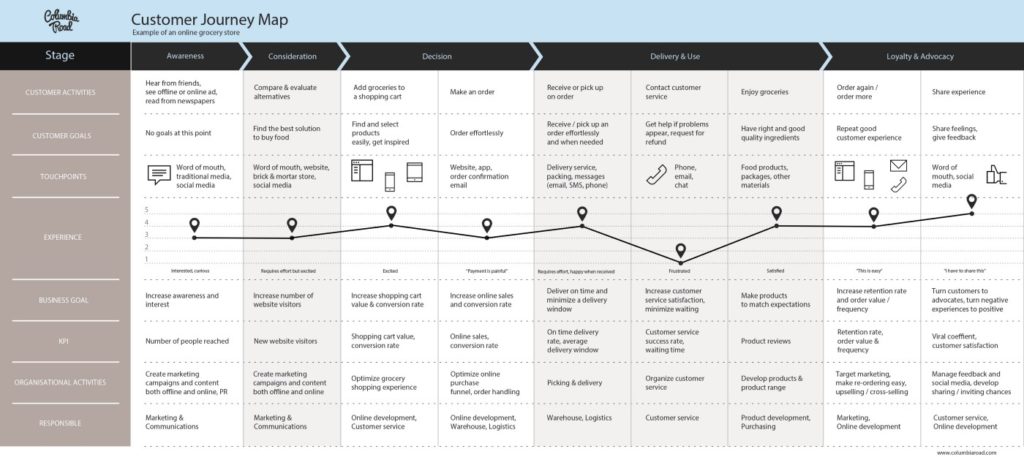
Example of a customer experience journey map
What is the difference between customer experience (CX) and customer journey?
Customer experience (CX) can be either pointing out the whole lifecycle of the user or in regards to just one touchpoint with a product/service. However, the customer journey is a presentment of the touchpoints a customer engage with a brand. Then, what are the five steps to map the customer journey?
Nielsen Norman Group: Customer journey mapping
- Timeline: Important turning points that map the changes in customer relations with the brand over time.
- Personas: Half-imaginary characters, typifying basic personal features of a wider customer group, based on data collected from user research, combined with web analytics.
- Emotion: Symbolic representation on the mood line of a customer’s emotional landscape at the moment of interaction.
- Channels: Entire vehicles of customer interaction and touchpoints with the brand.
- Touchpoints : Any and every moment of customer actions and interactions with the organisation or its products.
After defining the basics, it’s time to observe the customer experience flow and illustrate it as a roadmap. Megan Grocki, Experience Strategy Director at Mad*Pow, explains the nine key steps of designing a CX journey map in a video she prepared for UX Mastery.
How to create a customer journey map
In summary, here’s how we can repeat these nine steps, which visually form the crest of a wave.
So, how to create a customer journey map?
1. Review the goals
Consider the goals of the CX journey mapping process, as well as the goals of the organisation and its product or service.
2. Gather research
Conduct research based on relevant resources, including both qualitative and quantitative findings, and gather the results together.
3. Define channels and touchpoints
Work on determining channels and touchpoints where your customer will interact with your organisation, product or service.
4. Create an empathy map
To understand your customer’s emotional landscape, focus on what s/he is thinking, feeling, seeing, hearing, saying and doing.
5. Look at it from different perspectives
Practise generating ideas quickly by looking at problems and scenarios from different perspectives.
6. Create an affinity diagram
Organise your ideas visually, and classify and categorise them cohesively.
7. Sketch the customer journey
Draw a sketch of the CX journey map to make it comprehensible for your team.
8. Refine and digitalise
Create a digital map to help clarify any confusing details from the sketch.
9. Share and put in use
Now you are ready to take a journey through the eyes of your customer.
Lastly, it would help if you remember that customer journey maps need to be updated as conditions change since they are based on existing data and personal experiences. For this very reason, no CX journey map can be accurate forever and applied in different instances in different stages of a project. In other words, each CX journey map is as unique as each customer of an organization. Therefore, you should –not only today but always– keep your data and data processing up-to-date to know your customers better.
Customer journey maps examples
An example of a B2C customer journey map.
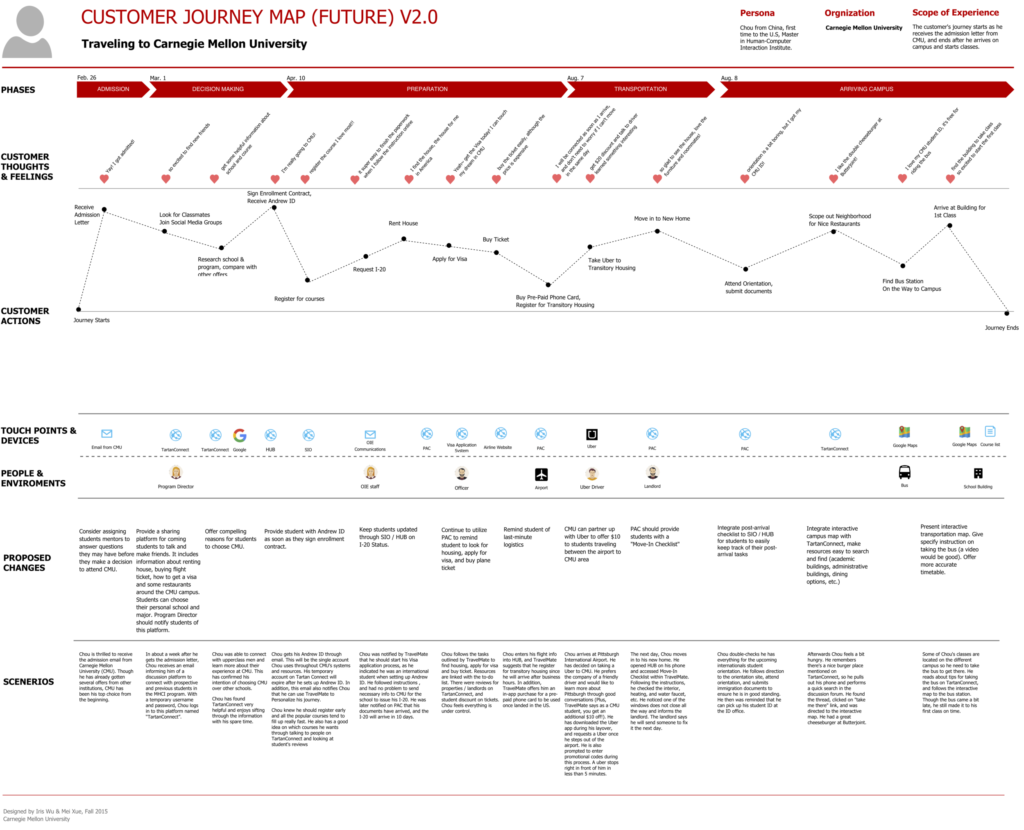
Customer journey map example (Source: Iris Tong Wu)
An example of a retail customer journey map.
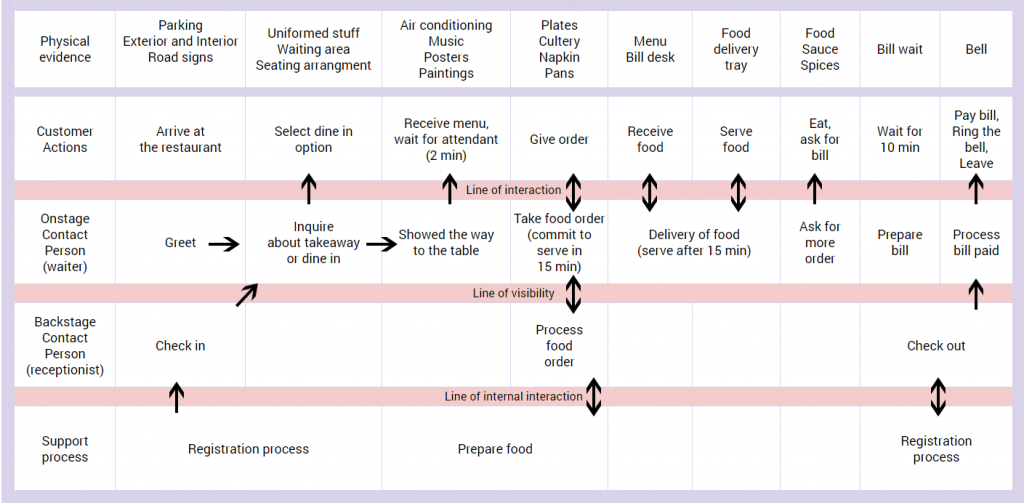
Customer journey map example (Source: UXPressia)
Root out friction in every digital experience, super-charge conversion rates, and optimize digital self-service
Uncover insights from any interaction, deliver AI-powered agent coaching, and reduce cost to serve
Increase revenue and loyalty with real-time insights and recommendations delivered to teams on the ground
Know how your people feel and empower managers to improve employee engagement, productivity, and retention
Take action in the moments that matter most along the employee journey and drive bottom line growth
Whatever they’re are saying, wherever they’re saying it, know exactly what’s going on with your people
Get faster, richer insights with qual and quant tools that make powerful market research available to everyone
Run concept tests, pricing studies, prototyping + more with fast, powerful studies designed by UX research experts
Track your brand performance 24/7 and act quickly to respond to opportunities and challenges in your market
Explore the platform powering Experience Management
- Free Account
- For Digital
- For Customer Care
- For Human Resources
- For Researchers
- Financial Services
- All Industries
Popular Use Cases
- Customer Experience
- Employee Experience
- Employee Exit Interviews
- Net Promoter Score
- Voice of Customer
- Customer Success Hub
- Product Documentation
- Training & Certification
- XM Institute
- Popular Resources
- Customer Stories
- Market Research
- Artificial Intelligence
- Partnerships
- Marketplace
The annual gathering of the experience leaders at the world’s iconic brands building breakthrough business results, live in Salt Lake City.
- English/AU & NZ
- Español/Europa
- Español/América Latina
- Português Brasileiro
- REQUEST DEMO
- Experience Management
- Customer Journey Mapping
- Customer Journey Stages
See how XM for Customer Frontlines works
The complete guide to customer journey stages.
12 min read If you want to turn a potential customer into a lifetime one, you’ll need to get to know every step of the entire customer journey. Here’s why the secret to customer retention lies in knowing how to fine-tune your sales funnel…
What is the customer journey?
What do we actually mean when we talk about the customer journey? Well, the simplest way to think about it is by comparing it to any other journey: a destination in mind, a starting point, and steps to take along the way.
In this case, the destination is not only to make a purchase but to have a great experience with your product or service – sometimes by interacting with aftersale customer support channels – and become a loyal customer who buys again.
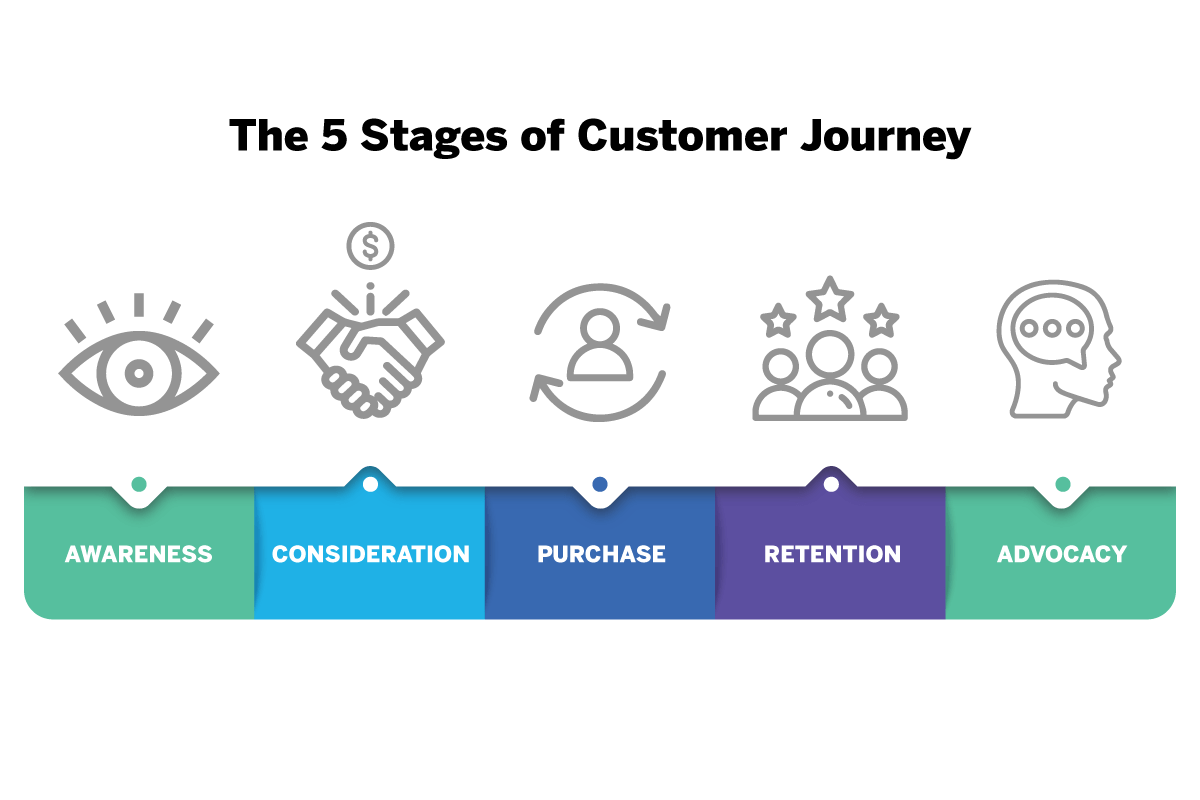
And, just like how you can’t arrive at your vacation resort before you’ve done you’ve found out about it, the customer journey starts with steps to do with discovery, research, understanding, and comparison, before moving on to the buying process.
“Maximizing satisfaction with customer journeys has the potential not only to increase customer satisfaction by 20% but also lift revenue up by 15% while lowering the cost of serving customers by as much as 20%”
– McKinsey, The Three Cs of Customer Satisfaction
In short, the customer journey is the path taken by your target audience toward becoming loyal customers. So it’s really important to understand – both in terms of what each step entails and how you can improve each one to provide a maximally impressive and enjoyable experience.
Every customer journey will be different, after all, so getting to grips with the nuances of each customer journey stage is key to removing obstacles from in front of your potential and existing customers’ feet.
Free Course: Customer Journey Management & Improvement
What are the essential customer journey stages?
While many companies will put their own spin on the exact naming of the customer journey stages, the most widely-recognized naming convention is as follows:
- Consideration
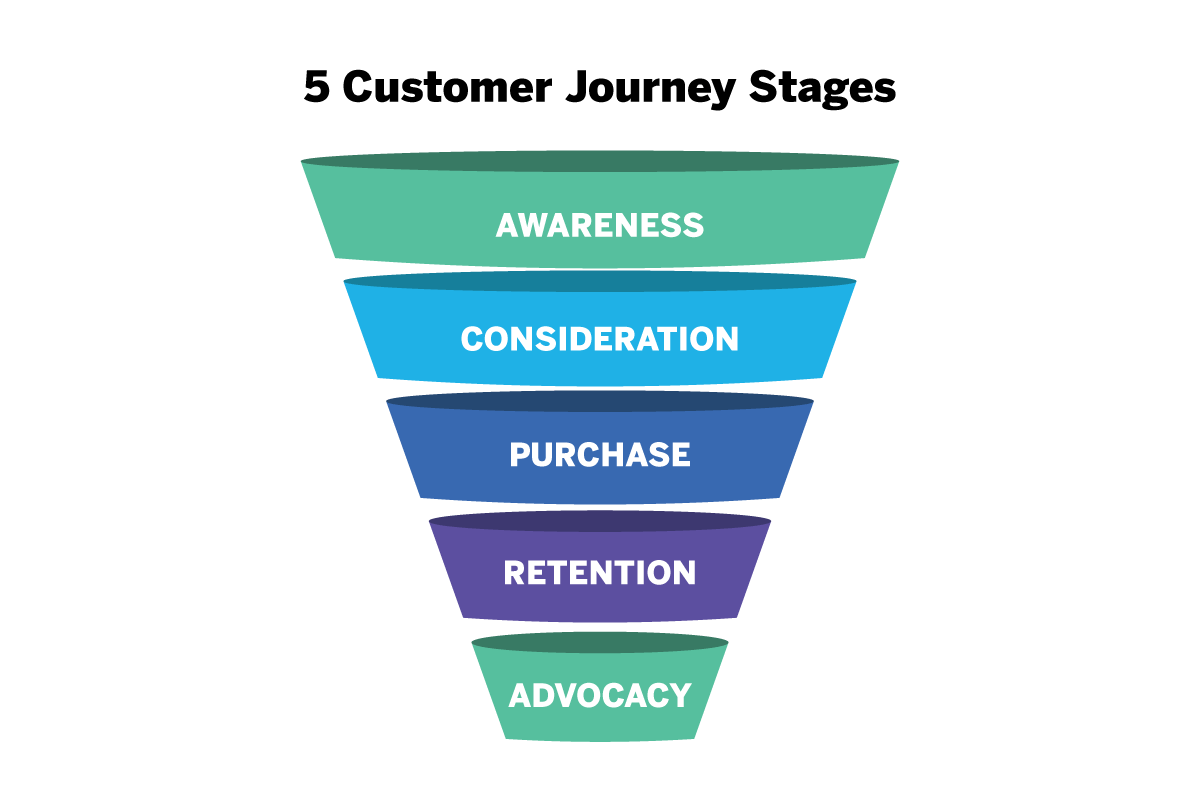
These steps are often then sub-categorized into three parts:
- Sale/Purchase
It’s important to understand every part of the puzzle, so let’s look at each sub-category and stage in turn, from the awareness and consideration stage, right through to advocacy:
Customer journey: Pre-sale
In the pre-sale phase, potential customers learn about products, evaluate their needs, make comparisons, and soak up information.
Awareness stage
In the awareness stage, your potential customer becomes aware of a company, product, or service. This might be passive – in that they’re served an ad online, on TV, or when out and about – or active in that they have a need and are searching for a solution. For example, if a customer needs car insurance, they’ll begin searching for providers.
Consideration stage
In the consideration stage, the customer has been made aware of several possible solutions for their particular need and starts doing research to compare them. That might mean looking at reviews or what others are saying on social media, as well as absorbing info on product specs and features on companies’ own channels. They’re receptive to information that can help them make the best decision.
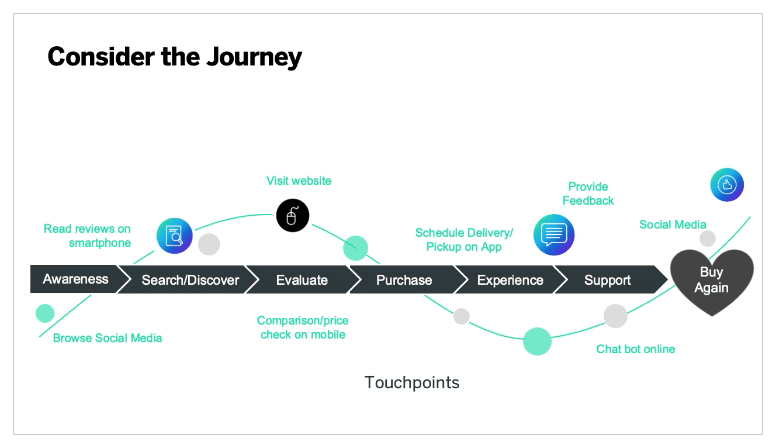
Customer journey: Sale
The sale phase is short but pivotal: it’s when the crucial decision on which option to go with has been made.
Decision stage
The customer has all the information they need on the various options available to them, and they make a purchase. This can be something that’s taken a long time to decide upon, like buying a new computer, or it can be as quick as quickly scouring the different kinds of bread available in the supermarket before picking the one they want.
Customer journey: Post-sale
Post-sale is a really important part of the puzzle because it’s where loyal customers , who come back time and again, are won or lost.
Retention stage
The retention stage of the customer journey is where you do whatever you can to help leave a lasting, positive impression on the customer, and entice them to purchase more. That means offering best-in-class customer support if they have any issues, but it also means being proactive with follow-up communications that offer personalized offers, information on new products, and rewards for loyalty.
Advocacy stage
If you nail the retention phase, you’ll have yourself a customer who not only wants to keep buying from you but will also advocate on your behalf. Here, the customer will become one of the most powerful tools in your arsenal, in that they’ll actively recommend you to their friends, family, followers, and colleagues.
What’s the difference between the customer journey and the buyer’s journey?
Great question; the two are similar, but not exactly the same. The buyer’s journey is a shorter, three-step process that describes the steps taken to make a purchase. So that’s awareness , consideration, and decision . That’s where things stop, however. The buyer’s journey doesn’t take into account the strategies you’ll use to keep the customer after a purchase has been made.
Why are the customer journey stages important?
The short answer? The customer journey is what shapes your entire business. It’s the method by which you attract and inform customers, how you convince them to purchase from you, and what you do to ensure they’re left feeling positive about every interaction.
Why this matters is that the journey is, in a way, cyclical. Customers who’ve had a smooth ride all the way through their individual journeys are more likely to stay with you, and that can have a massive effect on your operational metrics.
It’s up to five times more expensive to attract a new customer than it is to keep an existing customer, but even besides that: satisfied customers become loyal customers , and customer loyalty reduces churn at the same time as increasing profits .
So companies looking to really make an impact on the market need to think beyond simply attracting potential customers with impressive marketing, and more about the journey as a whole – where the retention and advocacy stages are equally important.
After all, 81% of US and UK consumers trust product advice from friends and family over brand messaging, and 59% of American consumers say that once they’re loyal to a brand, they’re loyal to it for life.
Importantly, to understand the customer journey as a whole is to understand its individual stages, recognize what works, and find things that could be improved to make it a more seamless experience. Because when you do that, you’ll be improving every part of your business proposition that matters.
How can you improve each customer journey stage?
Ok, so this whole customer journey thing is pretty important. Understanding the customer journey phases and how they relate to the overall customer experience is how you encourage customers to stick around and spread the news via word of mouth.
But how do you ensure every part of the journey is performing as it should? Here are some practical strategies to help each customer journey stage sing…
1. Perform customer journey mapping
A customer journey map takes all of the established customer journey stages and attempts to plot how actual target audience personas might travel along them. That means using a mix of data and intuition to map out a range of journeys that utilize a range of touch points along the way.
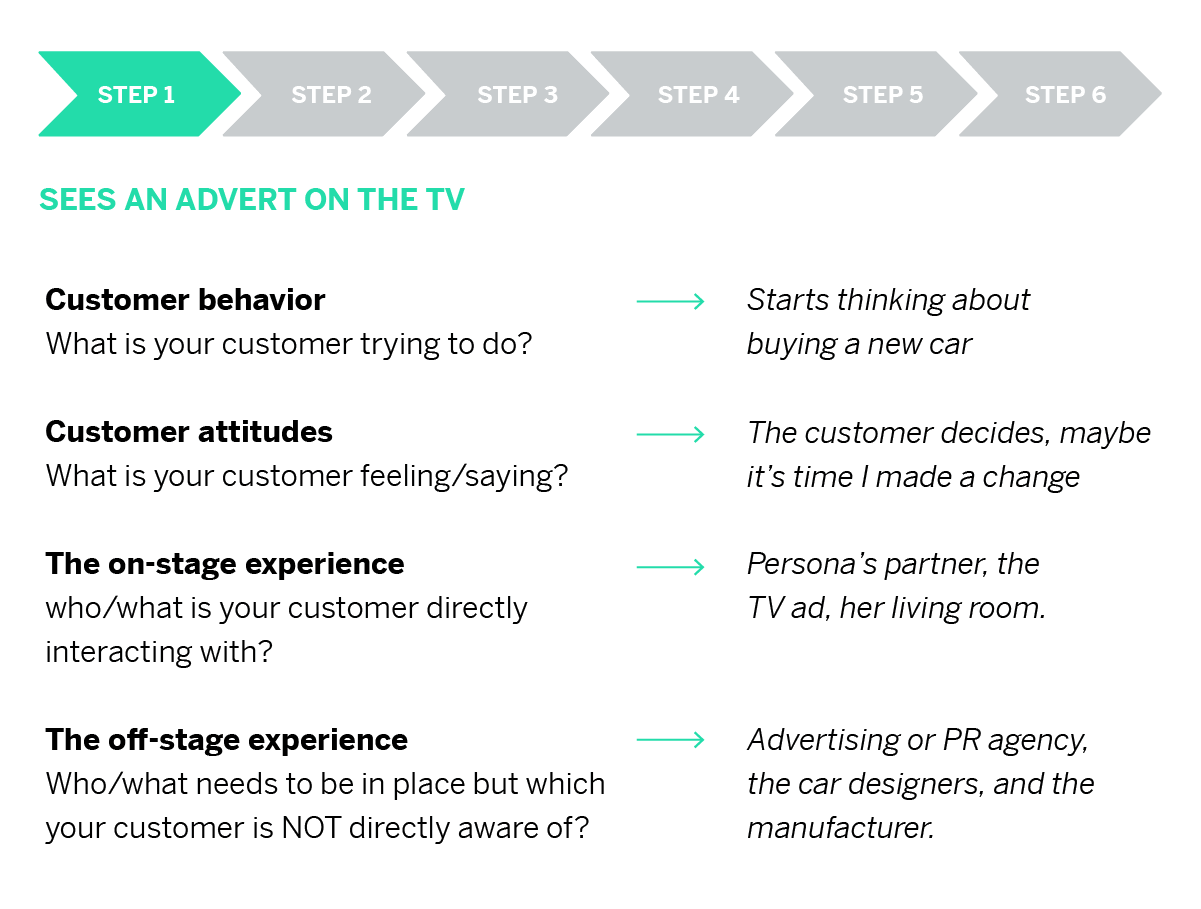
One customer journey map, for example, might start with a TV ad, then utilize social media and third-party review sites during the consideration stage, before purchasing online and then contacting customer support about you your delivery service. And then, finally, that customer may be served a discount code for a future purchase. That’s just one example.
Customer journey mapping is really about building a myriad of those journeys that are informed by everything you know about how customers interact with you – and then using those maps to discover weaker areas of the journey.
2. Listen like you mean it
The key to building better customer journeys is listening to what customers are saying. Getting feedbac k from every stage of the journey allows you to build a strong, all-encompassing view of what’s happening from those that are experiencing it.
Maybe there’s an issue with the customer sign-up experience, for example. Or maybe the number advertised to contact for a demo doesn’t work. Or maybe you have a customer service agent in need of coaching, who only makes the issue worse. By listening, you’ll understand your customers’ issues and be able to fix them at the source. That customer service agent, for example, may just feel disempowered and unsupported, and in need of the right tools to help them perform better. Fixing that will help to optimize a key stage in the customer journey.
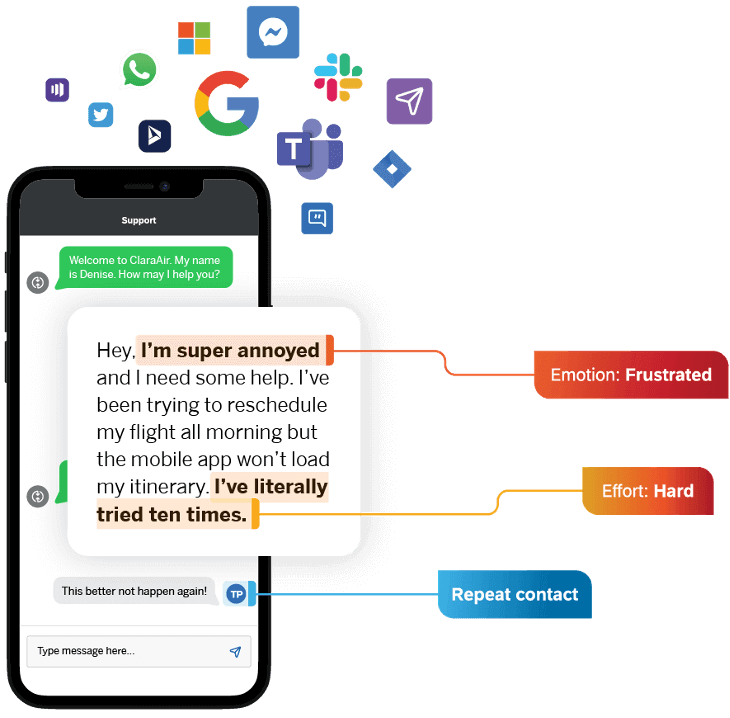
The key is to listen at every stage, and we can do that by employing the right technology at the right customer journey stages.
Customer surveys, for instance, can help you understand what went wrong from the people who’re willing to provide that feedback, but conversational analytics and AI solutions can automatically build insights out of all the structured and unstructured conversational data your customers are creating every time they reach out, or tweet, or leave a review on a third party website.
3. Get personal
The other side of the ‘listening’ equation is that it’s worth remembering that each and every customer’s journey is different – so treating them with a blanket approach won’t necessarily make anything better for them.
The trick instead is to use the tools available to you to build out a personalized view of every customer journey, customer journey stage, and customer engagemen t, and find common solutions.
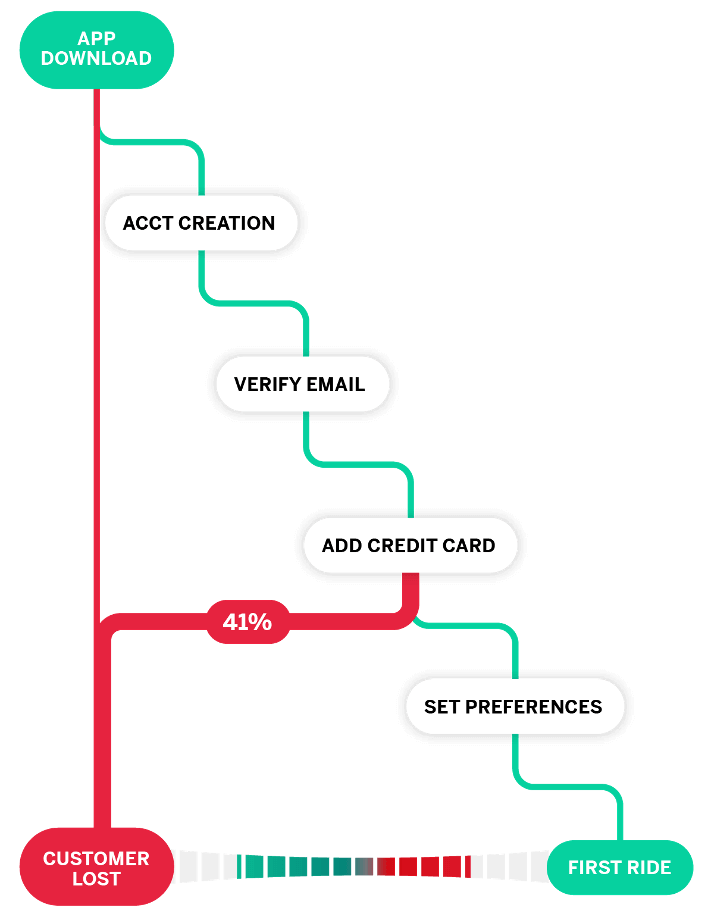
Qualtrics Experience iD , for example, is an intelligent system that builds customer profiles that are unique to them and can identify through AI, natural language processing , and past interactions what’s not working – and what needs fixing.
On an individual basis, that will help turn each customer into an advocate. But as a whole, you’ll learn about experience gaps that are common to many journeys.
Listening to and understanding the customer experience at each customer journey stage is key to ensuring customers are satisfied and remain loyal on a huge scale.
It’s how you create 1:1 experiences, because, while an issue for one person might be an issue for many others, by fixing it quickly you can minimize the impact it might have on future customers who’re right at the start of their journey.
Free Course: Customer Journey Management Improvement
Related resources
Customer Journey
Buyer's Journey 16 min read
Customer journey analytics 13 min read, how to create a customer journey map 22 min read, b2b customer journey 13 min read, customer interactions 11 min read, consumer decision journey 14 min read, customer journey orchestration 12 min read, request demo.
Ready to learn more about Qualtrics?
Customer Experience vs. User Experience: What’s the Difference? [+ Examples]
Published: June 16, 2023
For the sake of the chicken and egg debate, user experience is the “egg” in this story, and CX expands on UX by going beyond the product experience alone.
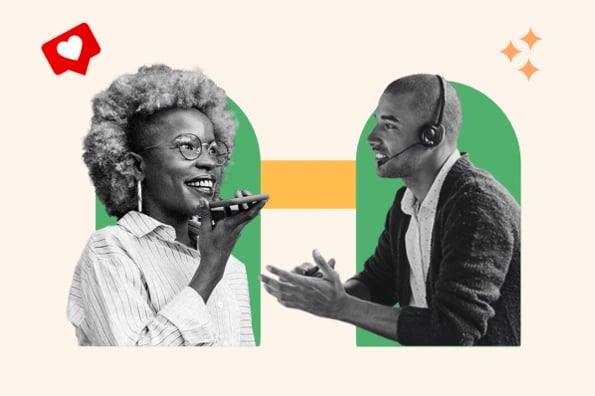
Despite their key differences, they’re often used interchangeably in business today. In this post, we’ll cover why it’s important to understand the difference and how each applies to your business operations.

Table of Contents

Customer Experience vs. User Experience
What’s the difference between cx and ux, why the difference matters, how cx and ux work together, cx and ux examples.
Customer experience is the impression your customers have of your brand based on all of the interactions they’ve had with your business. User experience is specific to how people use and perceive your products.
What is customer experience?
Customer experience combines the perceptions, feelings, and beliefs that your brand has created for customers throughout the entire buyer’s journey. Think about CX as the overall impression you’ve left on your customers.
Take this example: Your customer is experiencing technical difficulties with your product or service. They submitted a ticket through your help desk portal and spoke with someone on your team to resolve the issue. Here are some CX questions your customer may consider:
- Did this process feel seamless from beginning to end?
- Was the customer service representative friendly and responsive?
- Would I use this company again or recommend it to a friend?
CX is all about how your customers view your brand based on the quality of your products and the people they interact with along the way. And, our recent State of Customer Service Report highlights that 93% of service teams agree that customers today have higher expectations than ever before.
Remember, it’s the little things that make people shout about your company from the rooftops — both the positive and the negative.
What is user experience?
User experience focuses on all of the end user’s interactions with your product or service. Good UX keeps customers happy before, during, and after the product experience.
Using the same example from above, your customer may have asked themselves the following UX questions while using your help desk portal:
- Is this website visually appealing?
- Is the information accessible and easy to navigate?
- Can I use this website on either my desktop or phone?
Check out the video below to watch Don Norman explain the term UX in more detail.
Elements of UX, like intuitive design and minimal product friction, ultimately fit into the greater CX picture. That means creating the best holistic experience possible for your customer —from sales support to, you guessed it, customer service.
While CX and UX are complementary by nature, they don’t always solve for the same things. That’s why it’s still important to understand the differences between the two.
Let’s tackle that next.
CX goals are centered around delighting customers at every stage of the brand experience. You can use loyalty and satisfaction metrics to measure CX success. UX objectives focus on improving product design and usability from beginning to end. Successful UX can be measured using task-based metrics.
Target Audience
The audiences that CX and UX processes and tasks focus on are different.
CX target audience:
CX people focus on their customers' entire experience with their business, from the person researching the business to the person who clicks purchase. Sometimes this can be one individual, or it can be multiple people in different departments.
UX target audience:
UX people focus on the actual user of a product or service, regardless of whether they purchased it.
Goals and Objectives
Both CX and UX professionals work toward making (and keeping) customers happy through every business interaction. But, CX and UX strategists have their own unique set of goals and objectives to get there.CX people focus on the entire customer experience, while UX people focus solely on the experience with the offered product or service.
Common CX goals and objectives may include:
- Creating a brand experience that attracts, engages, and delights customers
- Promoting customer satisfaction at every stage of the buyer’s journey
- Generating a steady feedback loop where customers can voice their needs
Common UX goals and objectives may include:
- Designing a seamless product experience with minimal friction
- Developing products that are interactive, fun, and easy to use
- Ensuring products solve the most important problems customers face
In sum, CX professionals work to cultivate positive experiences with your brand. UX professionals focus on improving product interactions to help create those positive experiences.
Metrics and Measurement
There’s no one-size-fits-all approach to measuring the customer experience. But, CX boils down to how satisfied your customers are and how likely they are to recommend you to a friend.
Here are some metrics you can use to measure CX:
- Customer satisfaction — the degree to which a customer is satisfied with your brand based on interactions with your business
- Net Promoter Score® or NPS — a measurement of customer loyalty and how likely a person is to spread the word about your business
- Churn rate and reasons for churn — the number of customers your business is losing in a given period (and why)
A big part of measuring UX requires you to look at the usability of your products. User testing is a great way to find answers to common usability problems.
Here are some metrics you can use to measure UX:
- Website or page load speed — the amount of time it takes for your website to display content
- Time on task — how long it takes your customers to accomplish a goal (e.g., find the help desk portal on your website)
- Adoption rate — the ratio between new users and all users for a product or service
So, why does the difference between CX and UX matter anyway? Well, for one, distinguishing between internal roles and responsibilities is a must. Your UX team needs to focus on enhancing product usability.
While usability is important on the CX side, a positive brand experience is the true measure of CX success. That said, it’s important for your business to have separate but integrated strategies for each.
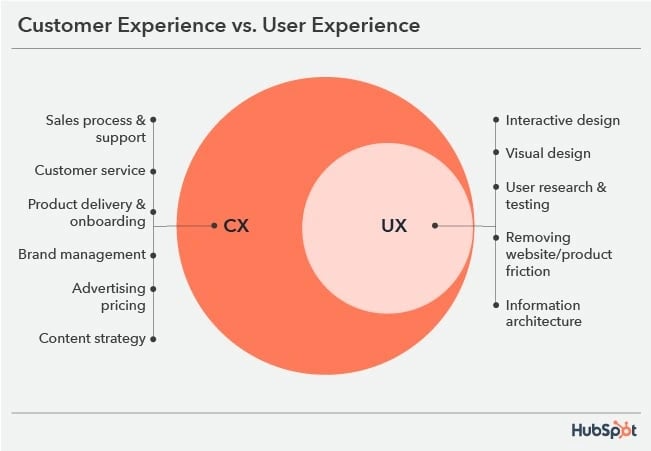
The result: happy customers.
Now, let’s talk more about CX and UX across the customer journey.
User experience is a subset of customer experience. Without good UX, you likely won’t be able to develop a positive customer experience.
UX is all about products . CX is all about people and products . UX has a direct impact on CX based on how the end user feels about the product or service you offer.
Both concepts work together to create a customer journey with no friction. If you’re unsure about what that journey might look like, try mapping it out. Customer journey maps are a great way to visualize a person’s experience with your company — from start to finish.
And, get this — journey maps can also help you assess the quality of UX and CX at each touchpoint. For example:
- Are there any pain points? Maybe your app is taking forever to load, and people are getting stuck before reaching a goal. That’s UX.
- How are your customers feeling? Maybe they feel supported any time they have an issue and can’t wait to tell their friends about your brand. That’s CX.
The culmination of UX and CX interactions across the customer journey help define how customers feel about you and your products.
CX in Practice
As mentioned, CX tasks are broader and focus on the customer journey. Here are some tasks that a CX team may complete:
- Conduct a customer satisfaction survey to gain insights into people’s experiences with your brand
- Review customer service tickets to identify and address recurring customer issues
- Check brand sentiment on social media to understand how customers feel about the brand
- Analyze churn rates and develop strategies to better retain customers
UX in Practice
UX tasks are focused on a product or service and target the end users who have interactions with/use a product or service. Here are some tasks that a UX team may complete:
- Brainstorm ways to make an app more interactive and fun to work with based on feedback from users
- Run a usability test for a website to identify obstacles that users are facing when trying to use a product or service
- Refresh the visual look and feel of a product or service landing page based on heat maps and usability tests
- Update the information architecture within a user interface so it’s more intuitive for people to navigate
So, in the end, I guess it doesn’t really matter whether CX or UX came first (still Team Egg , here).
Bottom line: The best thing you can do as a business is create the optimal experience for your customers.

Don't forget to share this post!
Related articles.
![cx vs customer journey How AI Image Misuse Made a World of Miscommunication [Willy's Chocolate Experience]](https://blog.hubspot.com/hubfs/ai%20image%20misuse%20the%20willy%20wonka%20experience%20%281%29.png)
How AI Image Misuse Made a World of Miscommunication [Willy's Chocolate Experience]

7 Ways to Delight Your Customers This Holiday Season

14 Customer Experience Fails that Companies Can Learn From
![cx vs customer journey How Customer Experience Has Evolved Over the Last Decade [+ 2024 Trends]](https://blog.hubspot.com/hubfs/future-of-customer-experience.png)
How Customer Experience Has Evolved Over the Last Decade [+ 2024 Trends]
![cx vs customer journey Memorable Examples of AR in Customer Experience [+Tips for Implementing the Technology]](https://blog.hubspot.com/hubfs/augmented%20reality%20customer%20experience.png)
Memorable Examples of AR in Customer Experience [+Tips for Implementing the Technology]

Digital Customer Experience: The Ultimate Guide for 2023
![cx vs customer journey How to Implement a Hybrid Customer Service Strategy That Works [Expert Tips]](https://blog.hubspot.com/hubfs/hybrid%20customer%20service_featured.png)
How to Implement a Hybrid Customer Service Strategy That Works [Expert Tips]

User Flows: 8 Tips For Creating A Super Smooth User Experience

11 Best Practices for B2B Customer Experience
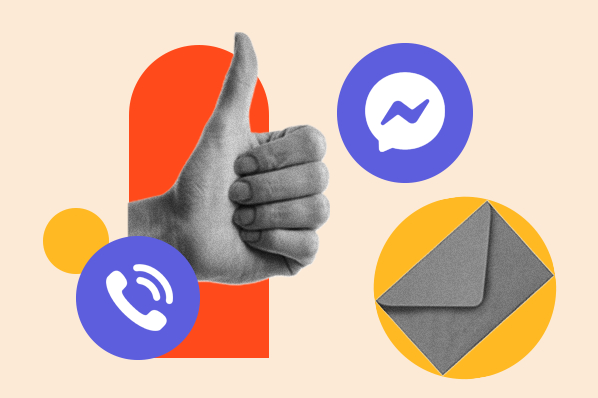
What is Omni-Channel? 20 Top Omni-Channel Experience Examples
Outline your company's customer journey and experience with these 7 free customer journey map templates.
Service Hub provides everything you need to delight and retain customers while supporting the success of your whole front office
Skip navigation

World Leaders in Research-Based User Experience
User experience vs. customer experience: what’s the difference.

July 6, 2023 2023-07-06
- Email article
- Share on LinkedIn
- Share on Twitter
Are customer experience (CX) and user experience (UX) the same? Well, the answer is yes and no. Here’s why.
In This Article:
Defining user experience and customer experience, varying scopes and why they matter, interaction level, journey level, relationship level, which term should you use.
Definiton: The concept of a user experience (UX) encompasses all aspects of a person's interaction with a company, its services, and its products.
Originally, "user experience" was meant to describe the totality of the interactions that users have with an organization. But because it was proposed in an era where computers were the main form of digital interaction, some have started to assign to it a limited interpretation. Their perspective associates user experience with one interaction, as opposed to the lifetime relationship between the customer and the company. To escape this limited perspective, some teams began to use a new term.
Definition: The term customer experience (CX) has been used to describe the totality of the interactions that a user has with an organization over time.
Although we rant against vocabulary inflation and creating new names for old things, we can’t fight the way in which language evolves. Whether you use the newer term “customer experience” or prefer the older “user experience,” the point to remember is: there are multiple levels of experience and each is equally important in delivering a good experience to your users.
If you consider the relationship between a person and a company across that person’s lifetime, you can define that user’s experience at three different levels:
- The single-interaction level , which reflects the experience the person has using a single device in order to perform a specific task
- The journey level , which captures the person’s experience as she works to accomplish a goal (possibly using multiple interaction channels or devices in order to do so)
- The relationship level , referring to all the interactions between the person and the company, throughout the life of the customer relationship
What it takes to deliver good user experience at each level can be quite different.
Interaction-level experience is what is commonly understood as the focus of UX and is concerned with designing the experience of a single interaction that a user has with a company to perform a task. Most UX designers work at the interaction level: they design the interface for a website or an application. But interaction-level experience pertains not only to digital channels, but it can also apply to physical channels.
Examples of interactions include:
- Receiving support on the phone
- Getting money at a teller window in a bank
- Filing a claim on an insurance provider’s website
Each of these interactions has a specific experience that is just a small part of the relationship between the customer and the company.
At the interaction level, we design using channel-specific principles, guidelines, and patterns.
The next level of experience is the journey level. A customer journey is the end-to-end process that a customer goes through in order to complete a goal over time. This process may use multiple devices and interaction channels (e.g., web, desktop or mobile apps, email, online chat, phone). Customer journeys can technically consist of one interaction if a user goal is completed as a single task and no other related interactions take place. However, most journeys consist of a series of related interactions aiming to complete a single goal.

Providing a good experience at the journey level introduces unique design challenges that require more focus on integration and coordination of elements than is necessary for interaction-level design.
Some journey-level challenges include:
- Delivering consistent messaging across channels and interactions
- Creating seamless cross-channel transitions
- Delivering a cohesive look, feel, and tone of voice across interactions
- Back-end technology integration to allow customers to move effectively between channels over time with the same quality of experience
The widest scope of user experience is the relationship level (aka the customer experience). At the relationship level we focus on the lifetime experience that a person has with an organization and his cumulative impression as a patron of that organization. Rather than assessing the quality of one interaction or one journey, the holistic level is concerned with all interactions and journeys between that person and the company.
Some examples include:
- The combined experience of researching, buying, using a product, and receiving support for that product
- The experience of subscribing to a software as a service platform, using it, troubleshooting issues, and receiving newsletters from the organization through termination of the account
- The combined experience of researching and buying an insurance policy, and interacting with the provider via phone calls, agents, and the website, throughout the life of the policy

A good relationship-level experience requires good interaction-level and journey-level experiences, but the whole is more than the sum of its parts.
It isn't enough to have good interaction- or journey-level experiences to get a good relationship-level experience. A good relationship-level experience involves effectively weaving together broad experience components such as key customer journeys, ad campaigns, print-to-mail items, product and service offerings, and call-center procedures and supporting graceful transitions across all different interactions and journeys.
Examples of relationship-level experience components include:
- Coordination between internal departments to tie together awareness and procurement campaigns with interaction-level experiences that truly deliver on expectations set in acquisition marketing.
- Being a steward of the ongoing relationship with users by anticipating their needs and proactively delivering the right content and service offerings at the right time
- Front-end staff training to utilize customer data to provide personalized support based on user’s prior engagements

Whether you use the term “UX” or “CX” is not important, because they basically mean the same thing if you have the “correct” interpretation of the terms.
What’s important is that:
- You understand the different scopes of experience and strive to optimize the experience at all levels; and
- You and your team use these terms consistently so that you minimize friction and misunderstanding
Designing the experience should not only take place at the interaction level. When individual experiences are designed and evaluated in silo, they will often pass acceptance criteria. But when you put independently designed interactions together into a realistic user journey, things often begin to break down, impacting the broader scopes of UX.
For example, the claims process may function flawlessly and meet user needs when tested in the lab, but if the information provided in the confirmation email contradicts or confuses the messaging from the claim workflow, the journey breaks down. And if the entire claims process changes dramatically without proper communication, longtime customers could face unexpected challenges completing tasks that were once easy. Then, the relationship-level user experience has been affected.
However, it’s not the case that the relationship-level experience is better or more important than the experience of a single interaction. We’ve seen many grandiose plans falter on a few poorly written words of UI copy. While it is important to design the longitudinal experience, it’s equally important to design its components. If people can’t understand your website, they won’t become customers in the first place. Or if callers are offended by their treatment when they place a support call, they won’t remain customers much longer.
Related Courses
Omnichannel journeys and customer experience.
Create a usable and cohesive cross-channel experience by following guidelines to resolve common user pain points in a multi-channel landscape
Interaction
Customer-Journey Management
Establish and operationalize journey-level experience design work across functional groups for continuous improvement
Journey Mapping to Understand Customer Needs
Capture and communicate UX insights across complex interactions
Related Topics
- Strategy Strategy
- Design Process
- Customer Journeys
Learn More:
Please accept marketing cookies to view the embedded video. https://www.youtube.com/watch?v=fn-4OPZAl0Q

The 3 Competencies of Journey Management
Kim Salazar · 5 min

UX Design Critiques: 3 Tips for Effective Feedback
Megan Brown · 4 min

Successful Omnichannel Experiences Begin with Cross-Functional Teams
Kim Salazar · 3 min
Related Articles:
CSD Matrix: Framework and Template for Shared Understanding
Anna Kaley · 9 min
Design Risks: How to Assess, Mitigate, and Manage Them
Therese Fessenden · 8 min
Seamlessness in the Omnichannel User Experience
Kim Salazar · 12 min
Optimizing for Context in the Omnichannel User Experience
Kim Salazar · 11 min
Availability in the Cross-Channel User Experience
Janelle Estes · 8 min
How and Why to Include Users in UX Workshops
Maddie Brown · 10 min

- Resource Guide

Personalization vs Customer Journeys: What Does Your CX Actually Need?

It’s no secret that a winning customer experience (CX) is now the biggest brand differentiator for retailers, and consumer-facing brands as a whole. Brands that deliver a tailored experience that meets the customer’s expectations and provides a level of convenience above and beyond what’s typically expected are the ones that succeed. Amazon.com, Spotify, Apple and others specialize in providing superior and anticipatory experiences.
So what can retailers do to ensure a winning customer experience? A common theme in the market, given so many brands in the midst of digital transformations, is to drive “personalization.” But as with so many technology buzzwords, it’s not necessarily always clear what this exactly means. Personalization is frequently used to refer to everything from using a customer’s name in communications, to learning which of two products is selling best right now, or occasionally to mean full-fledged customer journey strategies.
It's important to clarify what personalization needs to be for brands today, how it fits into a customer experience strategy, and why customer journeys take personalization to another level in terms of benefiting the customer experience.
Personalization’s Role in CX
Personalization, at its most basic level, is simply the practice of using something you know about a customer to make some form of communication unique and powerful for them. We as consumers see it everywhere. Emails from our favorite brands use our first names, e-commerce sites remember our previous orders, ride-sharing services know where we live and work, and music streaming and movie services know what we want to listen to or watch.
Personalization is critical to a positive customer experience because it’s what consumers expect, and — when done right — it can make everything from transactions to customer service calls far more seamless and positive. When you call your bank and they already know your information by the time a service rep picks up the phone, you’ve saved time and also feel like the brand understands you and your unique needs. This results in customer loyalty — an increasingly rare commodity, but one that can increase revenues by 70 percent according to Gartner .
In many ways, businesses have been personalizing experiences for many decades. All it requires is a piece of data to inform an experience. Fifty years ago this was the bank clerk remembering every customer they engaged. More recently, however, “personalization” has been used as a descriptor for tools that deliver anything from a personalized experience. Many packaged “personalization” tools are really trying to learn what are the most popular products of the day, and then automatically offer these products to every customer — a far cry from a personalized experience.
Taking Personalization to the Next Level
Once a brand starts using using data analytics to determine what a consumer might like or need, and predict how best to help that customer find what they seek, then we're talking about something that goes above and beyond current “personalization” tools and into the realm of an overall personalized customer experience. That’s where customer journeys come in to play.
Delivering a best-in-class customer experience means personalization at scale and through time — a t every customer touchpoint and building upon past experiences to deliver better future ones. This is the concept and practice of customer journeys, which take personalization to an entirely different level — connecting all interactions with a customer together, ensuring every one is a perfect fit for the customer.
Consider two scenarios. In the first, a consumer goes to purchase something from an online retailer and sees that, upon getting to checkout, the brand had saved his payment information, making the process much faster. This personalized experience saved the consumer time and may have the effect of fostering more brand loyalty. This type of personalization, however, is practically par for the course for online brands today.
In the second scenario, a consumer returns to a website and is immediately presented products that match an interest shown on a previous (although anonymous) visit, which encourages the purchase of an item. After the purchase is complete, the customer receives an offer for a special deal on a related product in return for joining a loyalty program. What follows are communications every time similar items go on sale, or relevant new items are first available. In addition, whenever the customer returns to the website, relevant and intelligent product recommendations are made.
What does this second richer customer experience require? First, a detailed understanding of the typical paths that consumers take to purchase. These journeys are the foundation of a customer journey strategy, and once they’ve been identified they can be reinforced, encouraged or any gaps in them repaired. Second, data collection is an absolute necessity — gathering and linking information on consumers that can be used to improve their experiences and anticipate their needs.
Finally, there needs to be a delivery mechanism for personalized journeys. This typically involves both machine learning and an orchestration engine to ensure journeys are delivered intelligently, in real time, and across all channels.
As we're at the start of a new year, retailers should look to move past the personalization tools of the last 10 years, which are now a basic element of every marketing and brand strategy, and towards a more holistic approach that delivers one-to-one personalized experiences across the entire customer lifecycle. This is how, in an incredibly competitive environment, brands can continue to earn loyalty and grow market share.
Mark Smith is the president of Kitewheel , an omnichannel customer experience, customer journey tool.
Related story: Ways That Retailers Can Bring Personalization to CX
Mark Smith is the president of Kitewheel , an omnichannel customer experience, customer journey tool.

Popular Content
Attract and retain customers by delivering amazing experiences with North America’s leading platform for cable and broadband billing.
CSG Ascendon
Sell any digital service direct to customers and let them build bundles, pay and self-serve on their terms.
CSG Encompass
Expand your portfolio beyond connectivity services to B2B and B2B2X, and generate new revenue streams.
Accept online and mobile payments, ACH, contactless and other digital payment options.
CSG Xponent
Deliver effortless customer experiences anytime, anywhere on CSG’s leading customer engagement platform.
Configure, Price, Quote
Customer communications & operations, customer experience, network solutions, payments & merchant services, revenue management & monetization, wholesale & partner management, view all products.
Introducing CSG Xponent Ignite. Customer engagement tailored to your industry, tied to your business goals and prebuilt to quickly go live.
Telecommunications
Monetize and optimize any digital or partner service with innovative solutions for telcos.
Financial Services
Be there for customers at every stage of their financial journeys.
Modernize the essential interactions with your citizens.
Manage notifications, customer journeys and payments for providers, payers or device manufacturers.
Unified customer engagement, journey and communications solutions for retail.
Tolling and Smart Mobility
Improve revenue collection by turning anonymous drivers into your customers.
- Latest News

Enhance CX at Scale With AI
Table of Contents
Customer journey management is one way to reap the benefits of artificial intelligence (AI) and machine learning. AI improves customer experiences (CX) throughout users’ interactions (journeys) with your brand.
AI and machine learning algorithms process large amounts of customer data across social media posts, online reviews, transaction records and support logs, uncovering/revealing trends and patterns. You can use these insights to understand customer preferences, personalize marketing efforts, enhance customer support and tailor experiences that resonate with your consumers.
Understanding AI for Customer Journeys
AI enables your organization to predict consumer actions, anticipate their needs and proactively address friction points. Ultimately, AI-powered journey tools help boost consumer satisfaction, loyalty and overall business performance across various touchpoints and interactions.
What Is a Customer Journey?
A customer journey is a series of interactions that a customer has with a brand for any particular task or decision . Journeys occur during all six stages of the customer experience lifecycle:
- Discover (research products and services)
- Buy (purchase products or services)
- Onboard and delivery (receive purchased products, activate cards or services, schedule medical appointments)
- Use and manage (change account details, report suspicious behavior, receive alerts about suspicious behavior )
- Support and resolve (pay bills, return a purchased product, schedule service appointments)
- Grow (receive targeted offers, renew and upgrade contract)
The customer decides what actions to take at each step in the process, but the business has an opportunity to guide those decisions and behaviors toward the desired outcome.
The Importance of Mapping the Consumer Journey
Customer journey mapping is vital in creating simple, convenient experiences that drive loyalty and conversions. When you understand how consumers interact with your business at various touchpoints and analyze their interactions and behavior, you are in a better position to eliminate friction points and create customer experiences that are so easy they are forgettable in a good way .
Leveraging Customer Journey Mapping and AI in Your Organization
Customer journey mapping automates data collection and analysis at scale, helping you get comprehensive insights rapidly. Your organization can also use predictive analytics to enhance the consumer journey.
Automated Data Collection and Analysis
Before AI, data collection and analysis were manual. You had to scour various systems and platforms to get an accurate overview of the customer journey. Now, AI makes data collection seamless, quick and automatic. AI capabilities deliver an overview of the consumer journey, identifying friction points and offering suggestions for improvement.
AI tools can extract accurate, meaningful insights from customer interactions that you can use to enhance journeys.
Predictive Analytics
Predictive analytics uses historical data, statistical algorithms and artificial intelligence (machine learning techniques) to identify the probability of future outcomes/events . Predictive analytics detects patterns in customer behavior to anticipate future behavior and needs, allowing brands to proactively meet those needs.
Predictive analytics allows you to tailor your offerings and deliver more personalized, efficient consumer journeys and experiences. You can use predictive analytics to make proactive decisions, helping you deliver positive interactions and effectively address pain points to increase satisfaction and reduce churn.
Increasing Personalization With AI
AI makes it possible to personalize content and offers at scale. AI algorithms improve customer segmentation by analyzing customer data to create more targeted segments. Better segmentation means better personalization of marketing campaigns—and more sales.
Enhancing Support With AI-Powered Chatbots and Virtual Assistants
AI -powered chatbots and virtual assistants can be used to deliver excellent customer support journeys.
Real-Time Consumer Support
AI chatbots provide 24/7 support without your organization needing to pay overtime costs. In fact, 64% of consumers agree that the best chatbot feature is the round-the-clock availability.
Consumers can resolve problems quickly by using self-service guides and resources, giving customer service reps more time to handle complex queries. Virtual assistants can also support your employees by automating repetitive tasks such as sharing a knowledge article or resetting a password.
Customer Journey Touchpoint Integration
You can integrate all your systems and platforms with AI and innovative technology . That means consumers can seamlessly transition between touchpoints without repeating themselves. And you can provide a frictionless, consistent customer journey experience across channels.
Improving Product and Service Recommendations
Machine learning algorithms can be used to tailor recommendations and promotions based on customers’ behavior patterns and content preferences. Netflix has credited its recommendation engine with saving more than $1B per year by keeping members from canceling their subscription.
Mitigating AI Risks and Issues
While AI can enhance CX, there are several potential drawbacks to consider:
- Privacy and security concerns: AI tech enables you to collect and process large amounts of data, which must be protected from unauthorized access and breaches.
- Over-reliance on AI: Although AI can deliver valuable insights, it may not capture the full complexity of consumer behavior and emotions.
- AI bias: AI algorithms are trained using historical data, containing inherent biases that can affect the accuracy of insights.
To mitigate risks and address AI issues , you can:
- Maintain human oversight and involvement in the decision-making processes.
- Implement robust security measures and delete any data you don’t need.
- Comply with the latest privacy and security regulations .
- Use high-quality, diverse datasets to minimize biases.
- Continuously monitor and evaluate your AI system performance.
- Partner with an experienced service provider to manage journeys.
Optimize Your Customer Experiences With AI
AI technology enhances your customer journeys and fosters loyalty, delivering exceptional experiences. With the right partner, you can reap the benefits of innovative technology while mitigating associated risks. CSG Xponent, our industry-leading customer experience solution, combines a customer data platform with customer journey analytics and customer journey orchestration to analyze current behavior, predict future behavior, and guide customers to the next best action. AI powers customer journey analytics, detecting intent and activating the next best action . In the contact center, CSG Xponent provides:
Automated self-service. Natural language processing analyzes customer responses to interactive voice response (IVR) prompts, identifying intent and needs. The decisioning system determines the most appropriate response or action based on customer information (intent, account information and behavioral patterns) and business rules or logic. Better self-service options mean fewer calls to live agents, reducing call volume and costs.
Intent-based call routing. the system determines callers’ intent by analyzing their IVR responses using natural language processing, then directs their call to the right agent group, reducing call transfers. The system provides a call transcript describing the problem to the agent during handoff, so customers don’t have to repeat themselves.
CSG has helped thousands of organizations for over four decades. Optimize your customer journeys with our simplified solutions and expert support. Contact us to learn more.
2024 State of the Customer Experience
Go beyond the buzzwords and learn about the new CX era. Learn what it is and what it’s not to understand how to craft the best strategy for your business.

An official website of the United States government
Here’s how you know
Official websites use .gov A .gov website belongs to an official government organization in the United States.
Secure .gov websites use HTTPS A lock ( Lock Locked padlock ) or https:// means you’ve safely connected to the .gov website. Share sensitive information only on official, secure websites.
Guidance on building better digital services in government
You have reached a collection of archived material
The content available is no longer being updated and as a result you may encounter hyperlinks which no longer function. This content may contain text and references which are no longer applicable as a result of changes in law, regulation, and/or administration.
User Experience (UX) vs. Customer Experience (CX): What’s the Dif?

“User Experience” and “Customer Experience.” They sound pretty similar, right?
Well, here at the Office of Citizen Services and Innovative Technologies, we look at it like this:
User Experience (UX) deals with people interacting with your product and the experience they receive from that interaction. UX is measured with metrics like: success rate, error rate, abandonment rate, time to complete task, and (since we deal in digital) clicks to completion.
Customer Experience (CX), in contrast, encompasses all the interactions a person has with your brand. It might be measured in: overall experience, likelihood to continue use, and likelihood to recommend to others. In essence, UX is part of a broader CX, but CX contains some aspects outside of a product that UX does not.
Good digital UX gives a user/customer the ability to:
- Find information on a website quickly and easily
- Complete a desired task with ease
- Search Web pages with ease
Good CX gives a user/customer the ability to:
- Have a pleasant, professional, helpful interaction with organization/company representatives
- Feel generally positive about the overall experience with that organization/company and everything associated with it
For example: Bill does a Google search for a government service, and finds xyz.gov. He then navigates the site to search for the information he desires and finds it. He found the site easily because xyz.gov had good search engine optimization (SEO). He effortlessly navigated the headings and links, because the information infrastructure, readability, and taxonomy was well thought-out. Finally, Bill was able to go from entry to xyz.gov to completing the desired task (getting information) in three clicks over 45 seconds. These are all examples of Bill’s user experience with xyz.gov.
But then, Bill had specific questions about how to complete a lengthy form, so he called the xyz agency contact center. After being on hold for more than 10 minutes, Bill connected with a contact center representative. The rep was unable to answer Bill’s questions about the form. It required escalation, additional time waiting for a response, and a call back from the rep. Bill finally got an answer to his question an hour later, completed his form, and submitted it electronically to the agency. The next day, Bill received another email message notifying him that his form was rejected due to incomplete information. Ultimately, Bill was likely going to have to call back with follow-up questions and request additional assistance.
In this mock scenario, despite an initial win in UX on xyz.gov, agency xyz failed in CX, because the overall interaction was unpleasant and difficult for Bill. Bill is probably not likely to return to xyz.gov, call the contact center, or recommend the website to anyone else. He’s likely to speak negatively about his experience with the agency as a whole.
It can work in reverse, as well. You might have the best advertising, brand recognition, sales team, customer service representatives, and organizational structure (all CX-related items), but if customers’ interactions with your website, mobile app, software or other product (all UX-related items) create barriers to completion of the desired tasks, overall CX fails.
You can see how UX is really a component of CX, and each play an important role in the overall success of a program, the reputation of your brand, and customers’ loyalty to your brand. Failures in either area lead to a bad customer experience overall. Think about this as you develop products and services, and make sure to begin with the customer in mind.
For more information on user experience, become part of the User Experience Community. This article is part of this month’s editorial theme on our DigitalGov Communities. Check out more articles related to this theme .
Join a Community
- U.S. Web Design System
- Customer Experience
- Web Analytics and Optimization
- Innovation Adoption
- Section 508 IT Accessibility
Related Topics
2014-07-07-user-experience-ux-vs-customer-experience-cx-whats-the-dif.md
news/2014/07/2014-07-07-user-experience-ux-vs-customer-experience-cx-whats-the-dif.md
Link Shortcode
{{< link "news/2014/07/2014-07-07-user-experience-ux-vs-customer-experience-cx-whats-the-dif.md
" >}}
Join 60,000 others in government and subscribe to our newsletter — a round-up of the best digital news in government and across our field.
Digital.gov
An official website of the U.S. General Services Administration
- Skip to main content
- Skip to primary sidebar
- Skip to footer
- QuestionPro

- Soluciones Soluciones Muestra Online Comunidades Online Encuestas Offline Repositorio de Insights Quizzes y sondeos Licencia Académica Herramientas Net Promoter Score NPS+ Análisis Conjoint MaxDiff Closed-Loop Van Westendorp
- Recursos Blog eBooks Webinarios Plantillas para encuestas Estudios de caso Centro de ayuda
- Características
Experiencia del cliente de Burger King: Entendiendo su journey

Burger King, el icónico gigante de la comida rápida, tiene una larga historia que se remonta a su fundación en 1954. Conocido por sus hamburguesas a la parrilla, laWhopper, y el perdurable eslogan «Hazlo a tu manera», la experiencia del cliente de Burger King se ha convertido en una marca global de comida rápida sabrosa y personalizable.
A lo largo de los años, ha evolucionado su menú, su marketing y sus estrategias de captación de clientes para seguir el ritmo de las cambiantes preferencias de los consumidores. Pero lo que realmente diferencia a Burger King en el competitivo panorama de la comida rápida es su compromiso de ofrecer una experiencia centrada en el cliente realmente memorable.
Iniciativas de Burger King centradas en el cliente
El camino de Burger King hacia la orientación al cliente ha estado marcado por iniciativas innovadoras que han redefinido la experiencia del cliente de comida rápida. La introducción del eslogan «Hazlo a tu manera» en los años 70 ejemplificó su compromiso con la personalización y la atención a las preferencias individuales. Esta iniciativa pionera se adelantó a su tiempo y sentó las bases del enfoque en una cultura centrada en el cliente .
En los últimos años, Burger King ha adoptado sin reservas la transformación digital. Su aplicación móvil y su sitio web se han convertido en potentes herramientas para mejorar la experiencia del cliente. Con estas plataformas digitales, los clientes pueden personalizar sus pedidos, acceder a promociones exclusivas e incluso pedir que les lleven la comida a casa. Burger King ha reconocido la necesidad de ir al encuentro de los clientes allí donde están y, en la era digital actual, eso suele significar la comodidad de una aplicación móvil.
Burger King ha reconocido que situar al cliente en el centro de su estrategia empresarial es clave para el éxito a largo plazo. Para lograrlo, la empresa ha puesto en marcha varias iniciativas centradas en el cliente:
- Evolución del menú : Burger King ha adaptado continuamente su menú para satisfacer los gustos y preferencias dietéticas cambiantes. Han introducido opciones basadas en plantas, opciones más saludables y ofertas de tiempo limitado para mantener a los clientes entusiasmados con su comida.
- Transformación digita l: Abrazando la era digital, Burger King ha invertido en tecnología para mejorar la experiencia del cliente. La aplicación de Burger King permite a los clientes hacer pedidos, personalizar comidas y acceder a promociones exclusivas. Este cambio a lo digital ha hecho que los pedidos sean más cómodos y atractivos.
- Integración de comentarios : Las opiniones de los clientes son muy valiosas para mejorar. Burger King recoge activamente los comentarios a través de los canales digitales, lo que permite responder rápidamente a las preocupaciones y realizar mejoras continuas basadas en las opiniones de los clientes.
- Transparencia y marketing : Burger King ha mantenido la transparencia en cuanto a los ingredientes de su menú y la información nutricional. Sus campañas de marketing, que incluyen eslóganes memorables como «Hazlo a tu manera», han calado entre los clientes, reforzando su compromiso con la personalización.
Aquí algunos consejos para personalizar la experiencia del cliente .
La importancia del Customer Journey de Burger King
Comprender el customer journey es fundamental para Burger King, como lo es para cualquier empresa que aspire al éxito a largo plazo. Burger King reconoce que cada interacción con el cliente, ya sea en un restaurante físico o a través de su aplicación, contribuye a la percepción general de la marca. Al trazar meticulosamente este recorrido, Burger King puede identificar puntos de dolor , momentos de deleite y áreas de mejora.
Aquí por qué el customer journey importa en Burger King:
- Mayor satisfacción del cliente : Al analizar el recorrido completo, Burger King puede identificar las áreas en las que los clientes pueden sentirse frustrados o incómodos. Abordar estos puntos de dolor conduce a una mayor satisfacción y lealtad.
- Experiencias personalizadas : El recorrido del cliente informa sobre cómo Burger King adapta sus ofertas y promociones a las preferencias individuales. La personalización es clave para mantener a los clientes comprometidos y que vuelvan a por más.
- Ventaja competitiva : Comprender el customer journey permite a Burger King adelantarse a sus competidores. Al optimizar continuamente los puntos de contacto y las experiencias, pueden diferenciarse en un mercado saturado.
- Lealtad a largo plazo : Un viaje del cliente sin fisuras fomenta la lealtad. Los clientes que tienen interacciones positivas a lo largo de su viaje tienen más probabilidades de convertirse en clientes habituales y defensores de la marca.
Conoce también cómo es la experiencia del cliente de Domino´s Pizza .
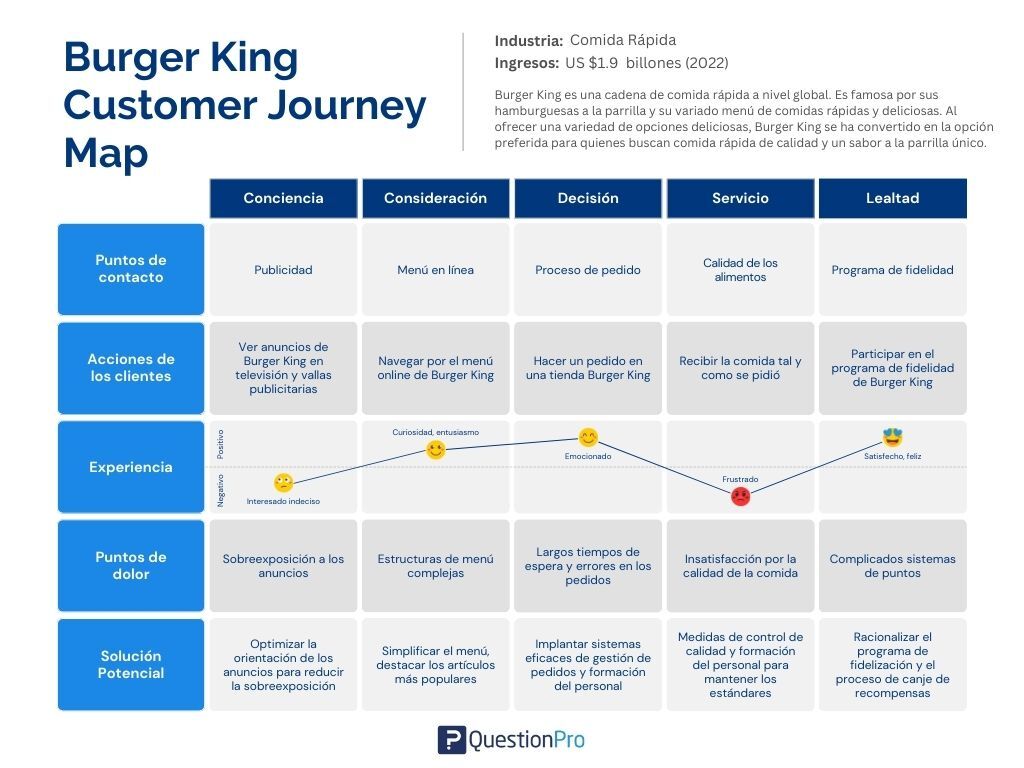
Etapa 01: CONCIENCIACIÓN O AWARENESS
En la primera fase de awareness o concienciación, Burger King llega a los clientes potenciales a través de varios puntos de contacto. La publicidad tradicional, una sólida participación en las redes sociales y el boca a boca positivo crean experiencias atractivas. Sin embargo, la sobreexposición a los anuncios puede provocar la fatiga del espectador.
Para combatirlo, Burger King puede optimizar la segmentación de los anuncios para reducir la sobreexposición, participar activamente en los comentarios de las redes sociales y animar a los clientes satisfechos a dejar comentarios positivos.
ETAPA 02: CONSIDERACIÓN
Durante la etapa de consideración, los clientes exploran el menú y la aplicación de Burger King. La claridad y la facilidad de navegación son fundamentales para una experiencia fluida. Para simplificar el menú y destacar los productos más populares, Burger King puede asegurarse de que su menú en línea sea sencillo y fácil de usar. Además, debe ofrecer actualizaciones periódicas de la aplicación y una sólida asistencia al usuario para mejorar la participación en la aplicación.
ETAPA 03: CONVERSIÓN
En la etapa de conversión, los clientes realizan pedidos en los establecimientos Burger King. La rapidez y la precisión de los pedidos son clave para una experiencia positiva. La implantación de sistemas eficaces de gestión de pedidos y la formación del personal pueden reducir significativamente los largos tiempos de espera y los errores en los pedidos. También deben aplicarse medidas de control de calidad para mantener la calidad de los alimentos tal y como se han pedido.
ETAPA 04: FIDELIZACIÓN
Los programas de fidelización y los canales de retroalimentación desempeñan un papel crucial en la fidelización de los clientes. Sin embargo, los complicados sistemas de puntos pueden disuadir de participar. Burger King puede simplificar su programa de fidelización y el proceso de canje de premios para hacerlo más fácil de usar. Además, atender activamente las opiniones de los clientes de forma rápida y visible demuestra su compromiso con la satisfacción del cliente.
ETAPA 05: PROMOCIÓN
La fase de promoción consiste en convertir a los clientes fieles en defensores de la marca . Animar a los clientes satisfechos a compartir sus experiencias positivas y proporcionarles plataformas para que lo hagan puede amplificar el alcance de la marca.
Estas tablas proporcionan información sobre cómo Burger King gestiona los distintos puntos de contacto, las acciones de los clientes, las experiencias, los puntos de dolor y las posibles soluciones en las diferentes etapas del customer journey . El análisis de estos elementos puede ayudar a las empresas a implementar y mantener su reputación de ofrecer una experiencia satisfactoria al cliente.
Para mejorar tu estrategia de experiencia del cliente , considera aprovechar las herramientas de CX de QuestionPro. Mediante la recopilación de comentarios en varios puntos de contacto, el análisis de los sentimientos de los clientes y la implementación de soluciones basadas en datos, puede seguir los pasos del enfoque centrado en el cliente de Burger King.
Explora también cómo es la experiencia del cliente KFC .
Mejora tu experiencia del cliente con QuestionPro’s CX
Aprendiendo del enfoque centrado en el cliente de Burger King, las empresas pueden tomar valiosos conocimientos y aplicarlos a sus propias operaciones. QuestionPro ofrece una potente plataforma para recopilar, analizar y actuar en función de los comentarios de los clientes. A continuación te mostramos cómo puede aprovechar la suite CX de QuestionPro basándose en las lecciones aprendidas de Burger King:
- Transformación digital: Adopta la tecnología para mejorar la experiencia del cliente , tal como lo hizo Burger King con su aplicación móvil. Las soluciones de feedback digital de QuestionPro pueden ayudar a agilizar la recopilación y el análisis de datos.
- Integración del feedback del cliente : Al igual que Burger King, utiliza QuestionPro para recopilar y analizar los comentarios de los clientes. Implementa mecanismos de retroalimentación en tus canales digitales para atender inquietudes y realizar mejoras.
- Personalización y fidelizació n: Las herramientas de CX de QuestionPro te permiten crear experiencias personalizadas y programas de fidelización, similares a las iniciativas de Burger King. Utiliza los datos para adaptar las ofertas a las preferencias individuales de los clientes y recompensar a los clientes leales.
- Eficiencia operativa : Mejora la eficiencia operativa con las capacidades de análisis e informes de QuestionPro. Identifica cuellos de botella y áreas de mejora en el recorrido del cliente, tal como lo hizo Burger King en sus tiendas.
- Mejora continua : Implementa una cultura de mejora continua con la ayuda de la recopilación de opiniones y los informes en tiempo real de QuestionPro. Sigue evolucionando tu estrategia de experiencia del cliente con base en la retroalimentación y las necesidades cambiantes del cliente.
El enfoque centrado en el cliente de Burger King ofrece lecciones valiosas para las empresas que buscan mejorar su experiencia del cliente. Al centrarse en la transformación digital, la integración de los comentarios de los clientes, la personalización, la eficiencia operativa y la mejora continua, puede crear un customer journey que haga que los clientes vuelvan por más.
La suite CX de QuestionPro proporciona las herramientas y conocimientos que necesitas para poner en práctica estas lecciones y elevar tu experiencia del cliente a nuevas alturas. Comienza hoy mismo tu viaje hacia la satisfacción y la fidelidad del cliente con QuestionPro.
MAS COMO ESTO

May 5, 2024
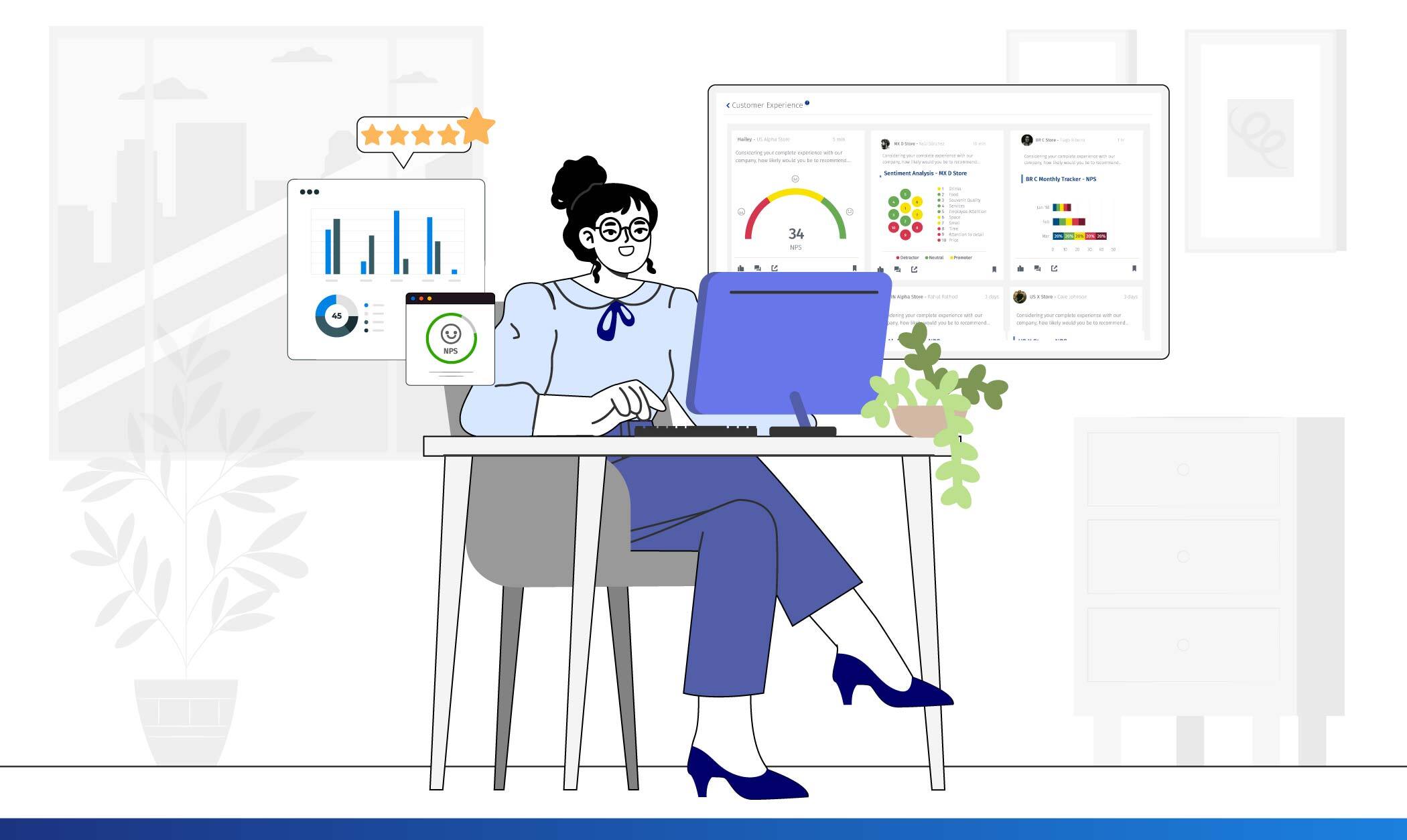
Software para el recorrido del cliente: Conoce los 11 mejores
May 3, 2024

Higiene de datos: Qué es, características y ventajas
May 2, 2024
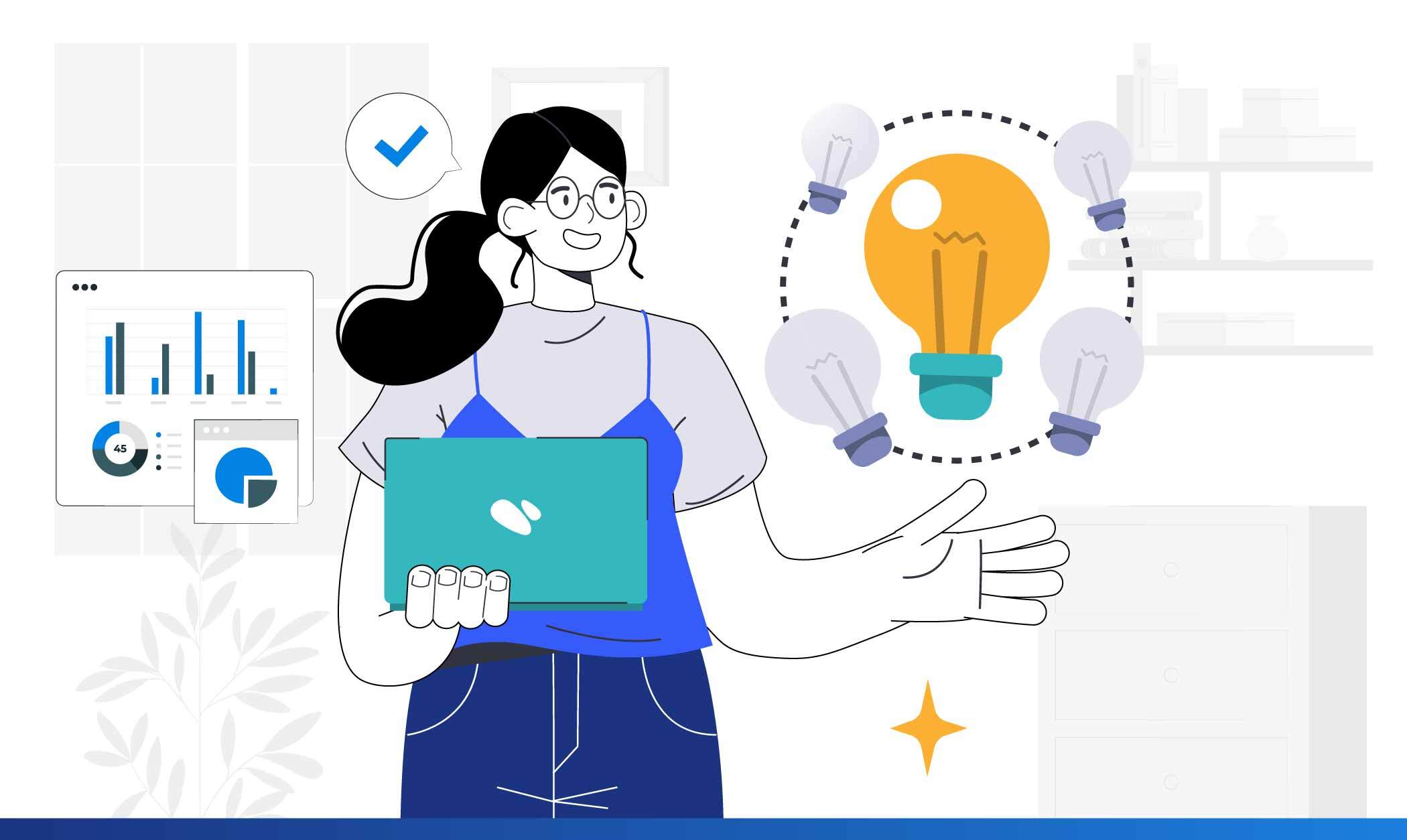
Software de gestión de ideas: Qué es, usos y alternativas
May 1, 2024
Otras categorías
- Beneficios para empleados
- Capacitación
- Compromiso con el cliente
- Compromiso de los empleados
- Comunidades
- Comunidades en línea
- Conocimiento de la marca
- Entrenamiento
- Estrategia de marketing
- Estudios de casos
- Experiencia del Cliente
- Fuerza de Trabajo
- Funciones mejoradas
- Herramientas y aplicaciones de investigación
- InsightsHub
- Interceptar
- Investigación académica
- Investigación de Consumidores
- Investigación de mercado
- Lealtad del cliente
- Mejores Practicas
- Mercadotecnia
- Productos de QuestionPro
- Productos QuestionPro
- Retención de empleados
- Satisfacción al cliente
- Sin categorizar
- Software para Encuestas
- Startup @es
- Toma de decisiones

IMAGES
VIDEO
COMMENTS
All of those questions touch on elements of customer experience. The four components of CX are brand, product, price, and service. Basically, CX refers to everything an organization does to deliver superior experiences, value, and growth for customers. And it's crucial in an age when how a business delivers for its customers is just as ...
CX is a broader concept that encompasses all aspects of a customer's experience with a business. CX boils down to emotions and how customers feel about your brand, unlike customer service, which ...
Customer Experience (CX) is the consequence of a customer's perceptions after interacting rationally, physically, emotionally, and/or psychologically with any part of a business. This perception affects Customer behaviors and creates memories that drive Customer Loyalty affecting the economic value a business generates.
TL:DR. Understanding customer journey and customer experience is essential for business success, as 73% of consumers prioritize experience in their purchasing decisions. Customer journey maps touchpoints, while customer experience delves into emotional and psychological experiences. Commonalities between them include customer focus, a holistic ...
As a CX manager, creating an empathy map to be used by all customer-facing departments can also help you sync your team's messaging to provide a frictionless, unified customer experience through every stage of the customer's journey. 3. Create a customer journey map. A customer's journey is everything that happens between "Oh, that's kinda cool ...
Customer journey vs process flow. Understanding customer perspective, behavior, attitudes, and the on-stage and off-stage is essential to successfully create a customer journey map - otherwise, all you have is a process flow. If you just write down the touchpoints where the customer is interacting with your brand, you're typically missing up to 40% of the entire customer journey.
Strong, sustainable customer relationships start with understanding customer experience (CX) value from the customer's point of view. Download this guide to build a clear, customer-centric approach to CX to help you: Ensure the CX is positioned to deliver maximum value to customers. Create a "true north" through which to view every CX ...
The simplest key difference between CX and customer service is that CX is concerned with meeting customer needs during the entire customer journey. Customer service is focused on post-purchase. As such, CS is considered a subset of CX. CX teams are concerned with both short-term tactics and long-term strategy.
Customer experience (CX) is the aggregate of every interaction a customer has with an organization. From the customer's first encounter with the business to the final act of making a purchase, every touchpoint within a customer journey contributes to the overall customer experience for an individual. Providing a favorable customer experience ...
Organise your ideas visually, and classify and categorise them cohesively. 7. Sketch the customer journey. Draw a sketch of the CX journey map to make it comprehensible for your team. 8. Refine and digitalise. Create a digital map to help clarify any confusing details from the sketch. 9. Share and put in use.
One customer journey map, for example, might start with a TV ad, then utilize social media and third-party review sites during the consideration stage, before purchasing online and then contacting customer support about you your delivery service. And then, finally, that customer may be served a discount code for a future purchase.
Download this Gartner guide with actionable steps to: Put foundational CX elements in place first. Create actionable, accurate customer journey maps. Derive value from your journey maps. Whether you are new or experienced with the journey mapping processes, these insights will help build your customer experience success.
The Practice of Customer-Journey Management. Summary: User journeys should be managed like products — by people and teams with specialized, journey-dedicated roles who continually research, measure, optimize, and orchestrate the experience. Journey management is the ongoing practice of researching, measuring, optimizing, and orchestrating a ...
Now, let's talk more about CX and UX across the customer journey. How CX and UX Work Together. User experience is a subset of customer experience. Without good UX, you likely won't be able to develop a positive customer experience. UX is all about products. CX is all about people and products. UX has a direct impact on CX based on how the ...
The widest scope of user experience is the relationship level (aka the customer experience). At the relationship level we focus on the lifetime experience that a person has with an organization and his cumulative impression as a patron of that organization. Rather than assessing the quality of one interaction or one journey, the holistic level ...
Differences between customer experience vs. customer journey. CX and customer journey maps serve different organizational purposes and have three critical differences, which reflect how CX and customer journeys differ: Proactive vs. reactive. CX is proactive -- as the organization listens to what potential customers want and need, it can change ...
Decoding Customer Experience (CX) CX is more than just a buzzword; it's a holistic perception that customers form based on their interactions with a business. And it isn't limited to a one-off transaction. Instead, it encompasses the entire customer journey—from the first point of contact to the final interaction—and everything in between.
Personalization is critical to a positive customer experience because it's what consumers expect, and — when done right — it can make everything from transactions to customer service calls far more seamless and positive. When you call your bank and they already know your information by the time a service rep picks up the phone, you've ...
A thoughtfully planned CX journey can pinpoint process inefficiencies and redundancies that, if remedied, can reduce the cost of customer service and other operational areas. Brand loyalty. CX journey mapping can create a positive customer experience with a company—engendering loyalty and incentivizing customers to keep coming back to the brand.
Customer journey mapping is an essential tool used by businesses to help them understand their customers' expectations better and help them improve their overall customer experience (CX) level ...
March 1, 2024. Customer journey management is one way to reap the benefits of artificial intelligence (AI) and machine learning. AI improves customer experiences (CX) throughout users' interactions (journeys) with your brand. AI and machine learning algorithms process large amounts of customer data across social media posts, online reviews ...
Customer Experience (CX), in contrast, encompasses all the interactions a person has with your brand. It might be measured in: overall experience, likelihood to continue use, and likelihood to recommend to others. In essence, UX is part of a broader CX, but CX contains some aspects outside of a product that UX does not.
Processes like order tracking, returns, and exchanges are automated, streamlining the customer journey, reducing friction, and simplifying the process. That includes things like: ... The Future of CX with AI. Keep in mind that the customer experience is very much a human thing - feelings, emotions, and perceptions about interactions with the ...
It's only partially correct. The customer journey begins after the buyer journey ends, after the prospect has made the purchase. Customer journeys are the process that customers go through post-purchase, from the moment they first interact with a brand, product, or service, through ongoing use and engagement, to potential renewal or ...
La importancia del Customer Journey de Burger King. Comprender el customer journey es fundamental para Burger King, como lo es para cualquier empresa que aspire al éxito a largo plazo. Burger King reconoce que cada interacción con el cliente, ya sea en un restaurante físico o a través de su aplicación, contribuye a la percepción general ...